Seminar Report
August 2019
Thunder Bay, Canada
copyright © 2019 Douglas Tong, all rights reserved.
__________________________________________________
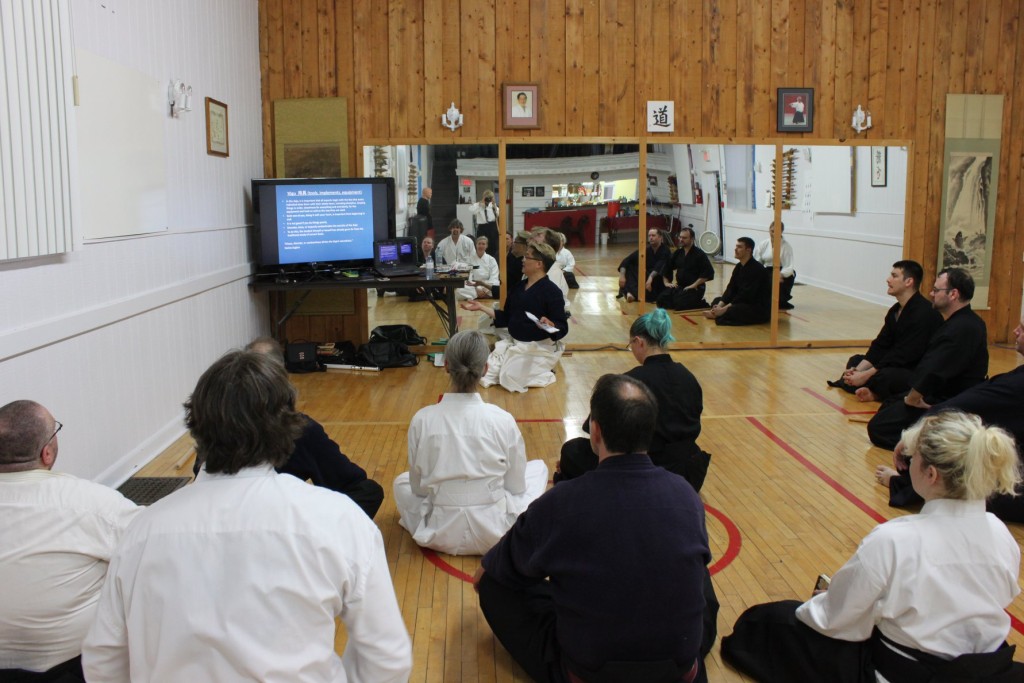
On August 2-5, 2019, Tong Sensei travelled to Thunder Bay to hold a seminar in Yagyu Shinkage Ryu Hyoho for his study group Mushin Kenjutsu. Here is the account of what happened.
__________________________________________________
Very much like the seminar in Montreal that I just ran last month in July of 2019, this seminar in Thunder Bay was another type of “first”. Although this was my third visit to Thunder Bay, this seminar would be very different from the first two times.
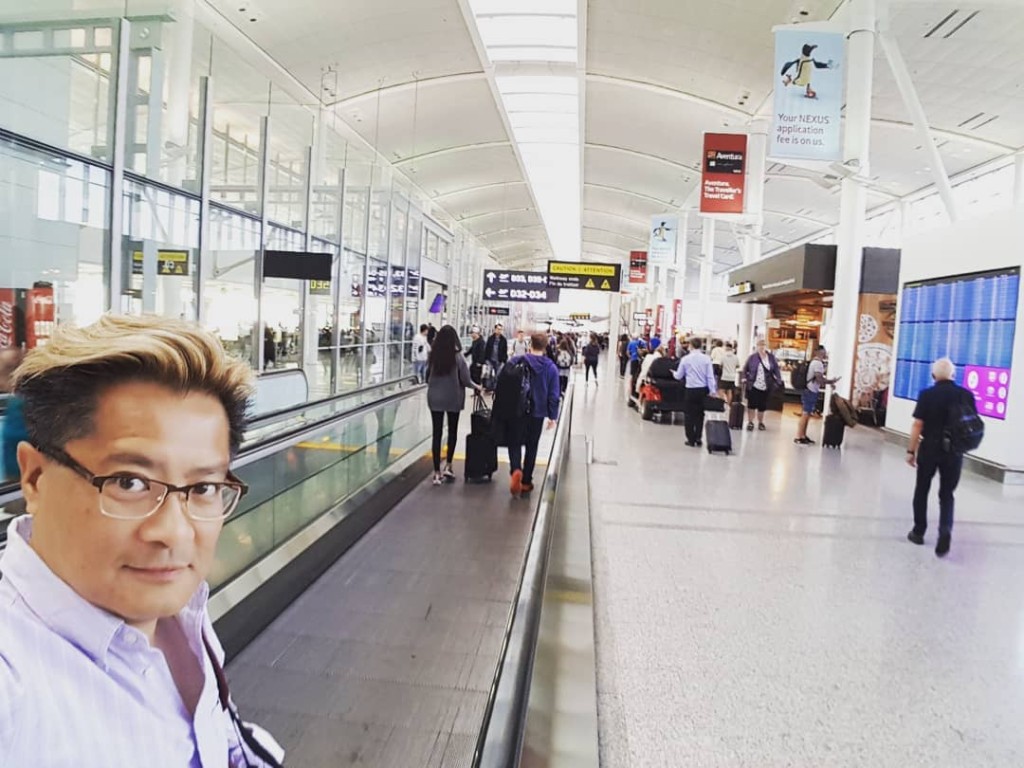
First off, I would be meeting a whole bunch of new members of Sensei Kyle’s Mushin Kenjutsu group. The last two times I went, the group consisted basically of just Sensei Kyle and Andrew. This time, there would be more. In fact, his group has grown. Now there are 9 members: Sensei Kyle, Sempai Andrew, Chris, Peter, Stefani, Gail, Dogan, Josh, and Chandra. In three years, they have quadrupled in size! Amazing.
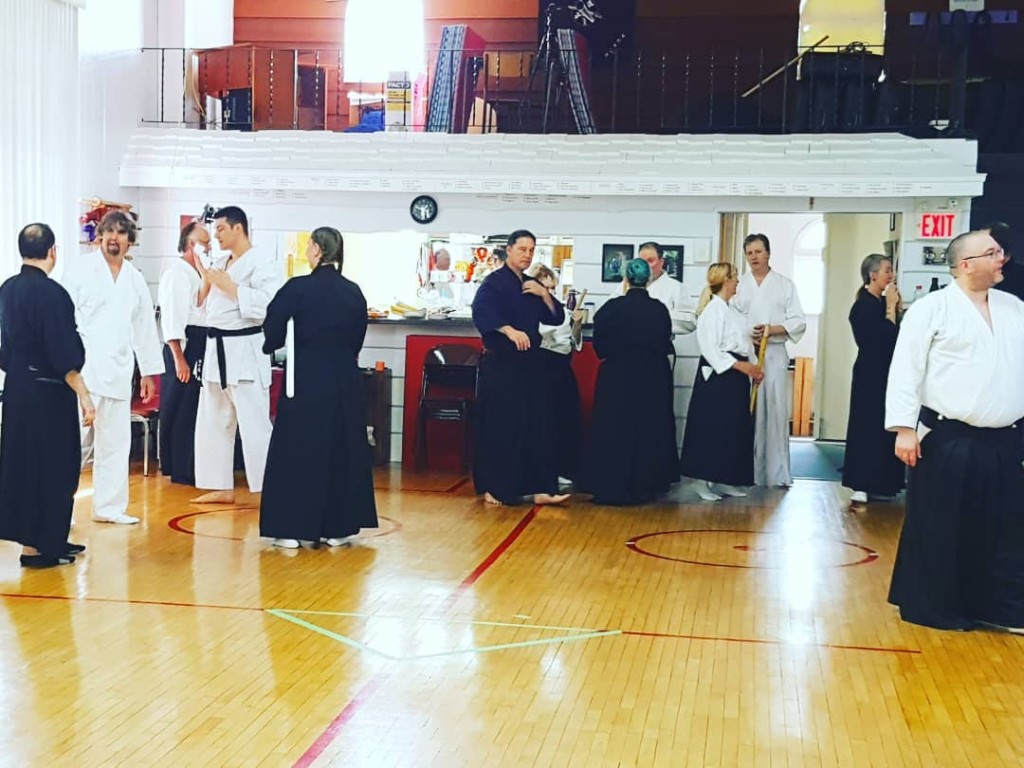
Second, we would be having some visitors from outside groups. Sensei Erika and Brent would be coming from the Ottawa Group. New members Sensei Martin and Erica would be attending from the Oshawa Group. And Morgan would be participating from the Orangeville Group.
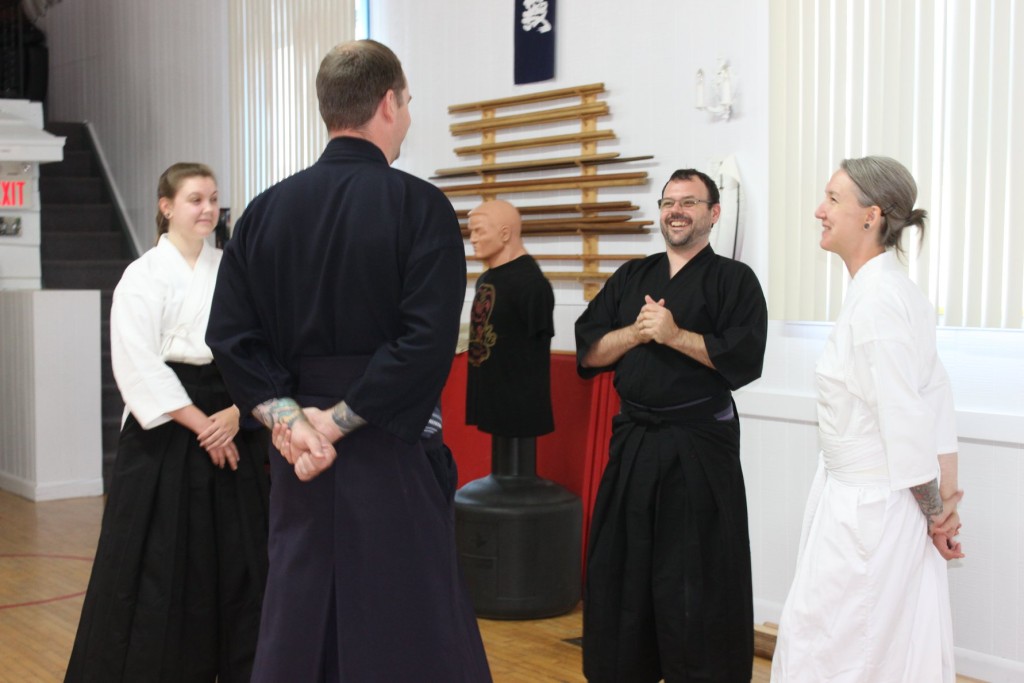
Thirdly, Sensei Eric and Sensei Doug from Rai Un Kai Iaido and Jodo Organization would be in attendance as well. In fact, these two teachers, along with Martin, Erica, Kyle, and Erika, are all members of the CKF, the Canadian Kendo Federation. In some ways, it would be a little bit of a CKF reunion party as well. They all know each other and already have relationships with each other.
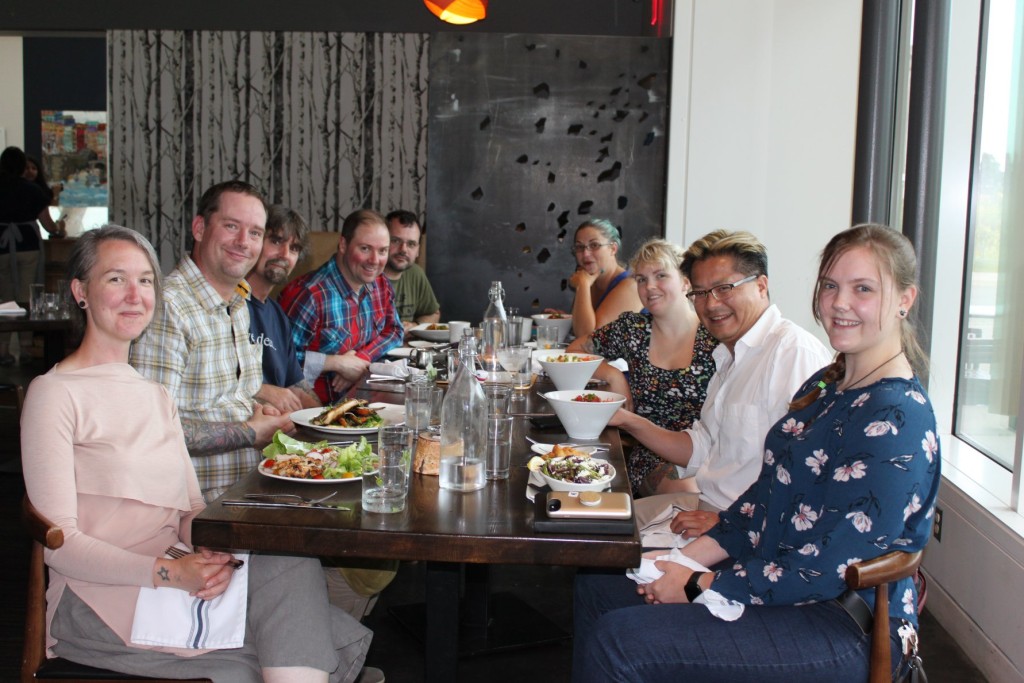
Fourth, we were going to have a lot of teachers in attendance. Sensei Kyle of Mushin Kenjutsu Dojo, our host. Sensei Eric and Sensei Doug from the Rai Un Kai Iaido and Jodo Dojo in Thunder Bay. Sensei Martin from the Kenshokan Dojo Group in Oshawa. And Sensei Erika from the Meishinkan Kenjutsu Dojo in Ottawa. Having many high-level practitioners in attendance would be very interesting indeed. How to make this seminar interesting and rewarding to them was also foremost in my mind.
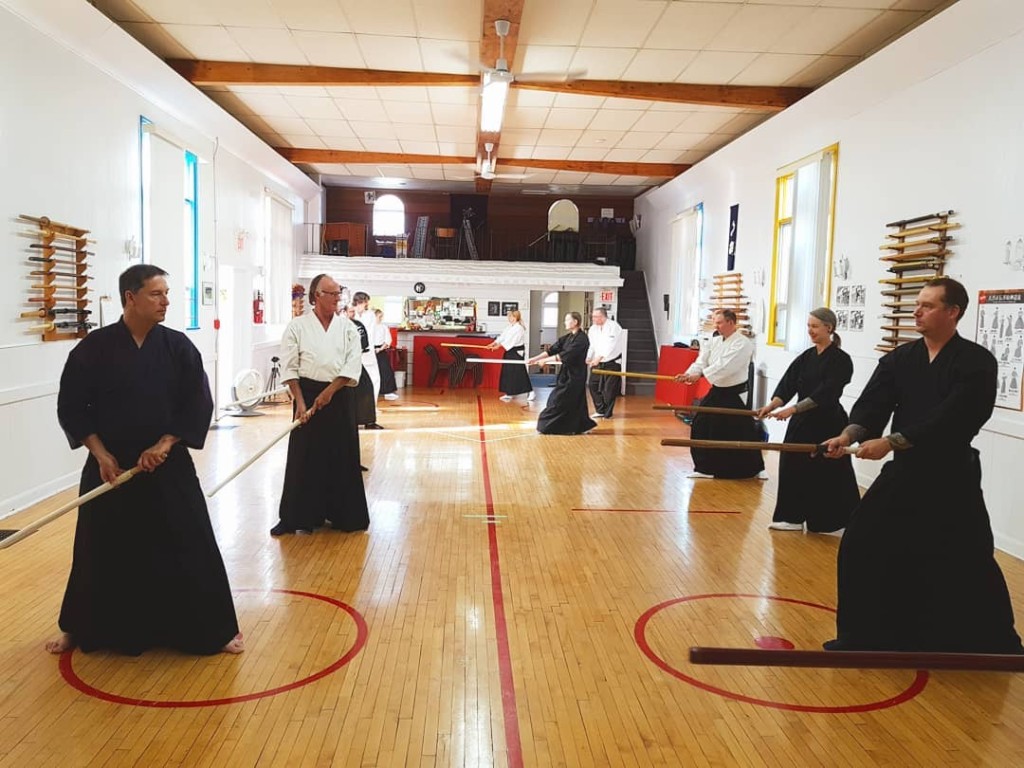
I already knew coming in that it would be a very interesting seminar as we would have a diverse mix of abilities and experience. Some people would be coming with Yagyu experience, others with jodo and iaido experience, and still others with no experience in martial arts at all. What to teach them was first and foremost in my mind, so that all could have a valuable experience and take something away with them from it.
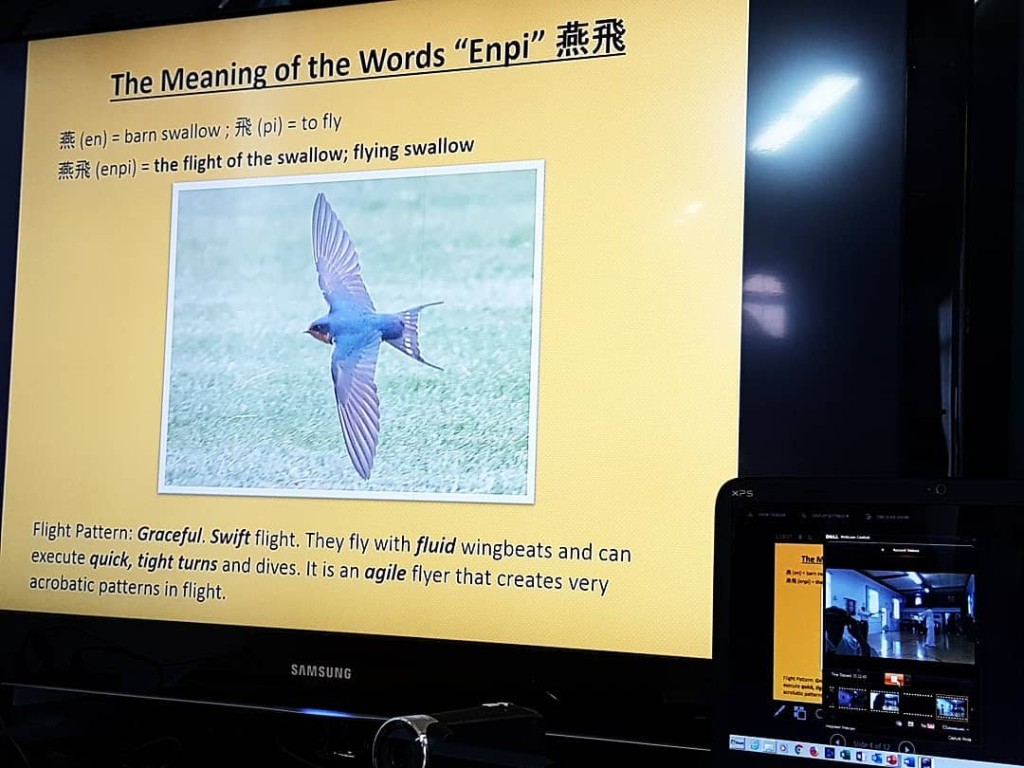
In addition, we had one member who had attended the Yagyu Gasshuku in the historic Yagyu Village two years ago and got bombarded with information which I guessed he did not understand. So I also felt it imperative to try to put some context to what he had seen but did not at the time understand. Going to Japan is a mind-blowing experience. But when you don’t understand the language, communicating and understanding is a very big obstacle. Usually in such a case where one travels to Japan, when Westerners don’t understand, they smile to put the speaker at ease and encourage them to talk more. Problem is, the Japanese speaker keeps speaking and you keep falling even further behind since you don’t understand a word that they had said previously. You can only smile so long. I thought that this might be the case, so I felt it important to try to fill in the gaps and to try to help him to make sense of what he had seen and experienced there.
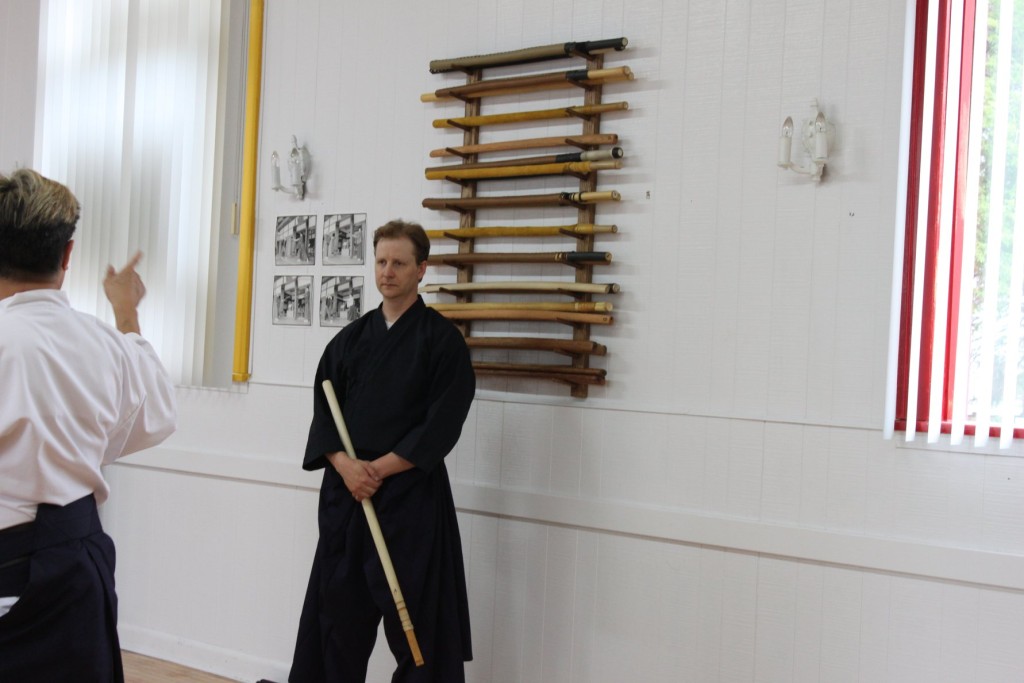
Also, we had a young group in the Thunder Bay Group. And with young learners, they are initially attracted to the blades and the moves and the techniques. But that is only one side of the equation. Techniques are great. But if it is only technical, it is barren and empty. There is no “soul”. That brings up the question of “what exactly is budo”? Is it just a collection of “techniques”? Is that all it is? Is that all there is to it?
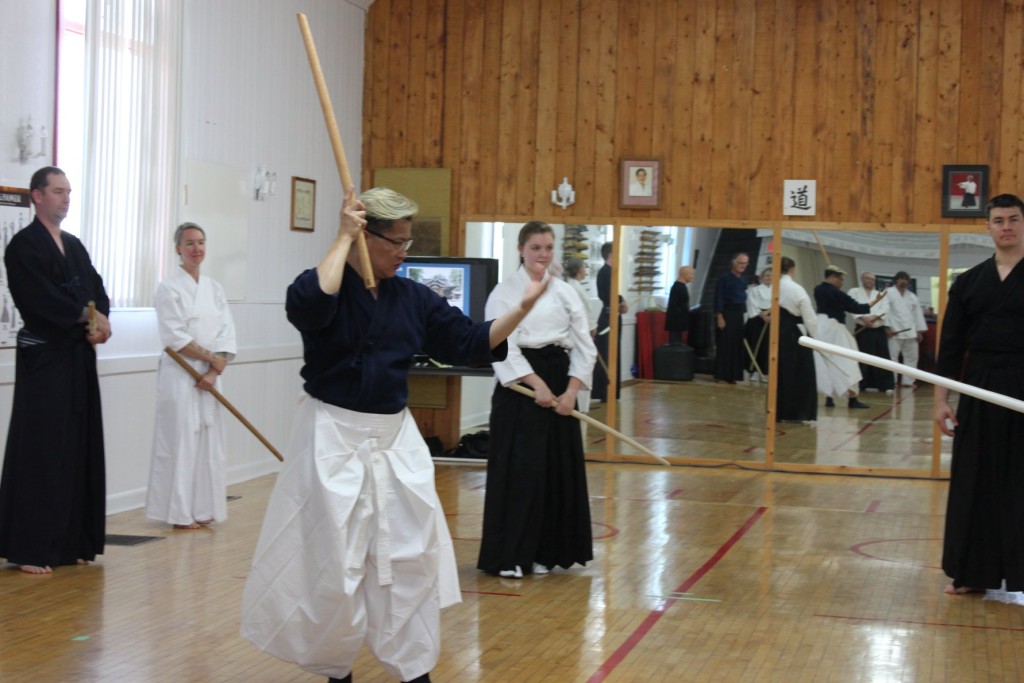
I heard that in some North American seminars, pretty much that is it. The seminars consist only of learning techniques, endless techniques. Typically, you go to a weekend seminar and you cover techniques. Foot goes here, hand extends to there, the proper cut is 37 degrees. That’s it? Yes, in some places, that is it.
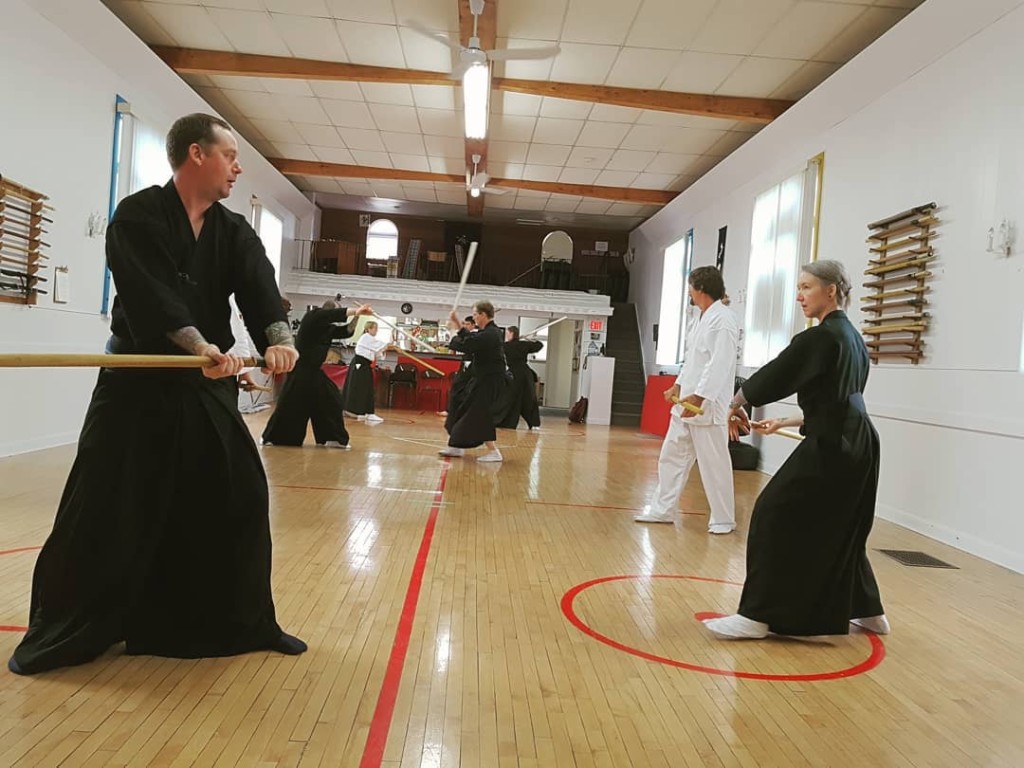
Then I hear that there are all these politics and power plays and etc. Well, that is not surprising since the spirit and soul of Budo is missing. This is the other side of the equation. It is an extremely important element that completes the practitioner. Like the Tokugawa Edict in the Edo Period, ‘bun-bu-ichi’. This means the sword and education as one. In other words, the pen and the sword together. To have one without the other makes you unbalanced. That is what the Tokugawa authorities thought. So in this way, I also felt it essential that I cover it for this new group, to give them that ‘moral anchor’ which would help set the tone for their further journey in learning about Budo.
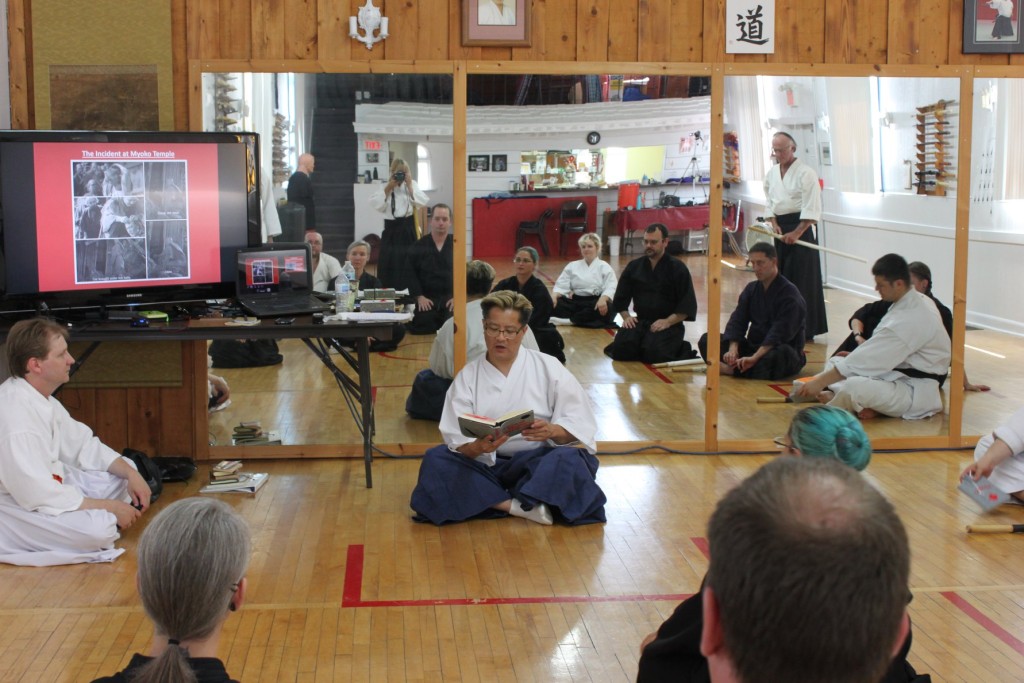
Before the seminar, I also got questions about fighting from some of the beginners. How would you win against a big opponent? Don’t you need strength and power to fight against someone big like a Viking? So already, I could tell that their idea of Budo, and Japanese Budo at that, was very incomplete and naive. So, some education on what Budo means and what it encompasses was sorely needed. Is Budo only about fighting? Endless fighting and strife? I had some work to do.
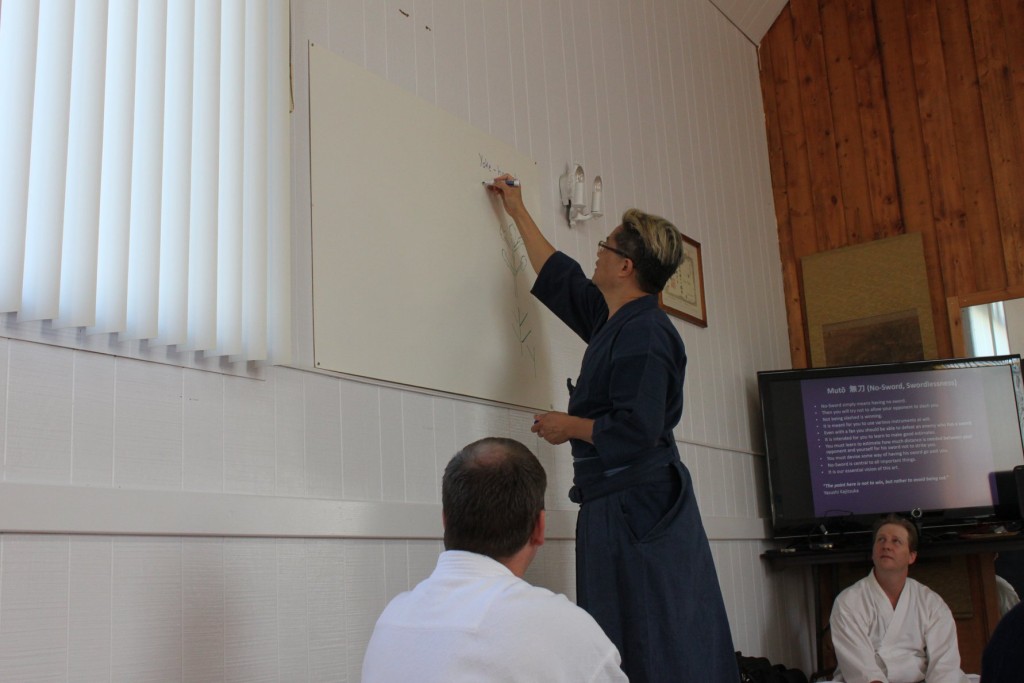
How should I tell you the answers to all these issues? Well, maybe through a look at the result of the seminar. At the conclusion of the seminar, after 4 intensive days of training, the seminar group gave me a card. Here are some of the reactions from the participants and what they wrote on the card.
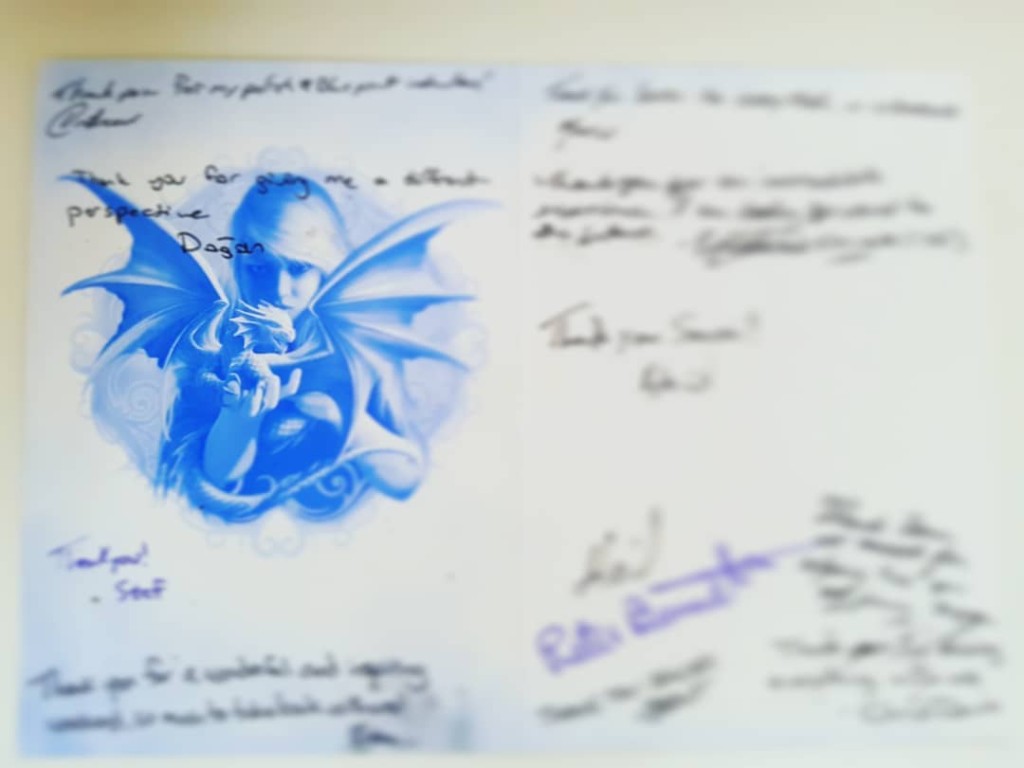
New Perspectives
“Thank you for giving me a different perspective.”
This was one of the beginners who thought Budo was just about fighting. On the first day, I went over what Budo meant historically. Was it about winning at all costs? No. Actually, it was very religiously based. That surprised some people. From the Shinto and Buddhist Gods:
“The origin of the martial arts goes back to Amaterasu who sent Futsunushi to Earth to pacify the warring gods ruling there. With this budo began, as a way of honesty, unselfishness, and a sign of thanks and reverence to the gods.”
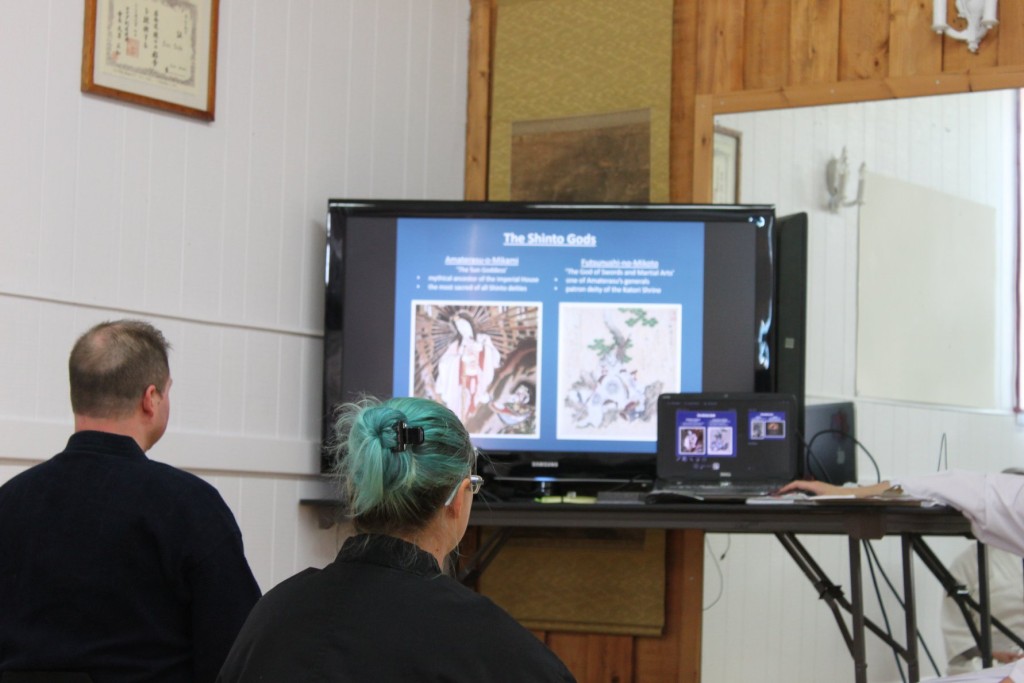
That is why we bow. So what is Budo? What is the real meaning?
“The aim of budo is to answer to the mercy of the emperor (the descendant of Amaterasu) and an expression of thanks to our country.”
It is not to win. I am sure that that is what the beginner thought. And in fact, that is absolutely not the real meaning of Budo. It is actually to serve. Like our military and our police nowadays, whose motto is: “To serve and protect.” That is the real meaning of Budo. This is a much more noble cause than simply being out to conquer and win for yourself, a very selfish idea which is contrary to the ideals of real Budo.
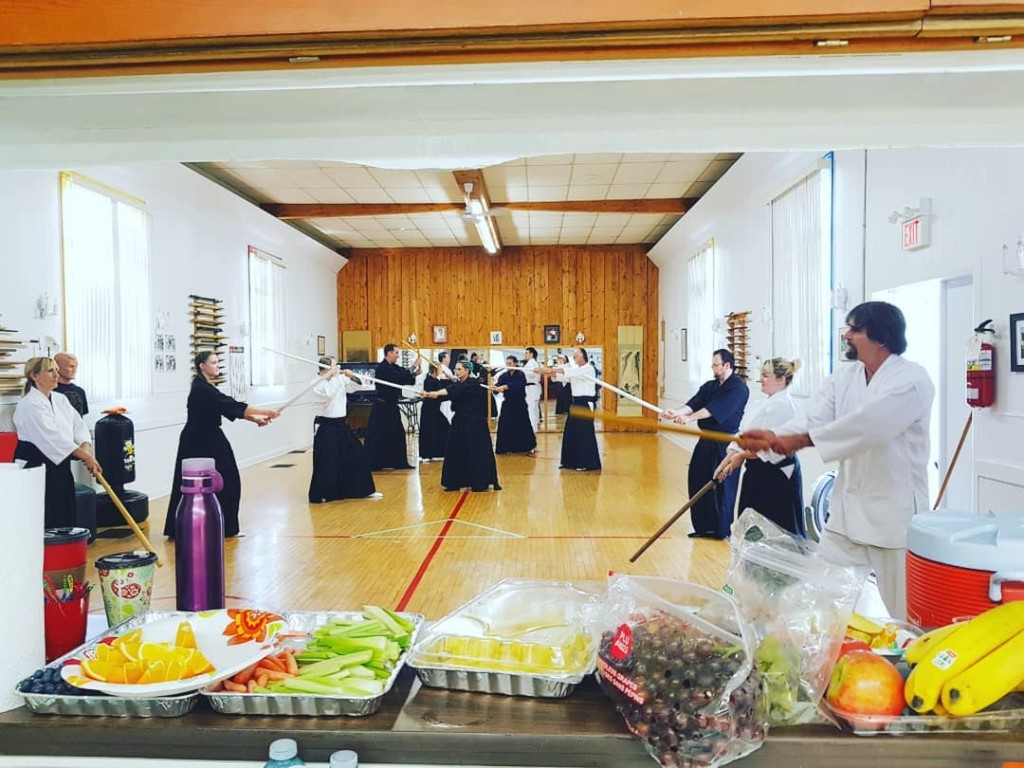
A New Journey
“Thank you so much for helping me on my journey.”
The study of Budo is a journey. A lot of people lose sight of that. In the zeal for the easy acquisition of techniques and the instant emotional gratification they get from satisfying their impulses for fighting, they totally miss the true purpose of training in Budo.
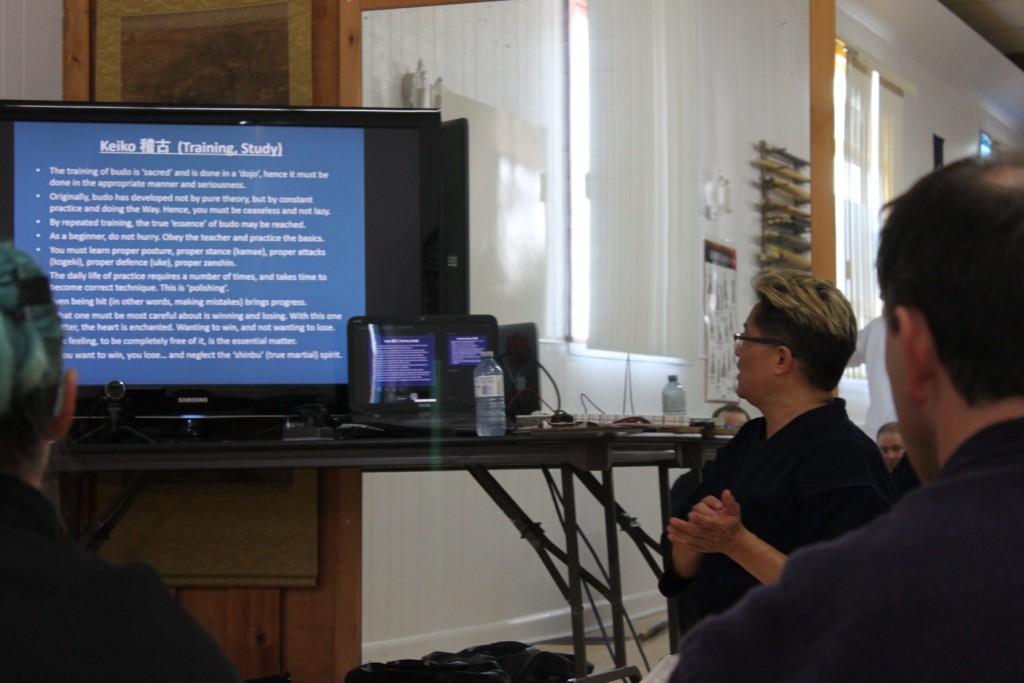
“What one must be most careful about is winning and losing. With this one matter, the heart is enchanted. Wanting to win, and not wanting to lose. This feeling, to be completely free of it, is the essential matter. If you want to win, you lose… and neglect the ‘shinbu’ (true martial) spirit.”
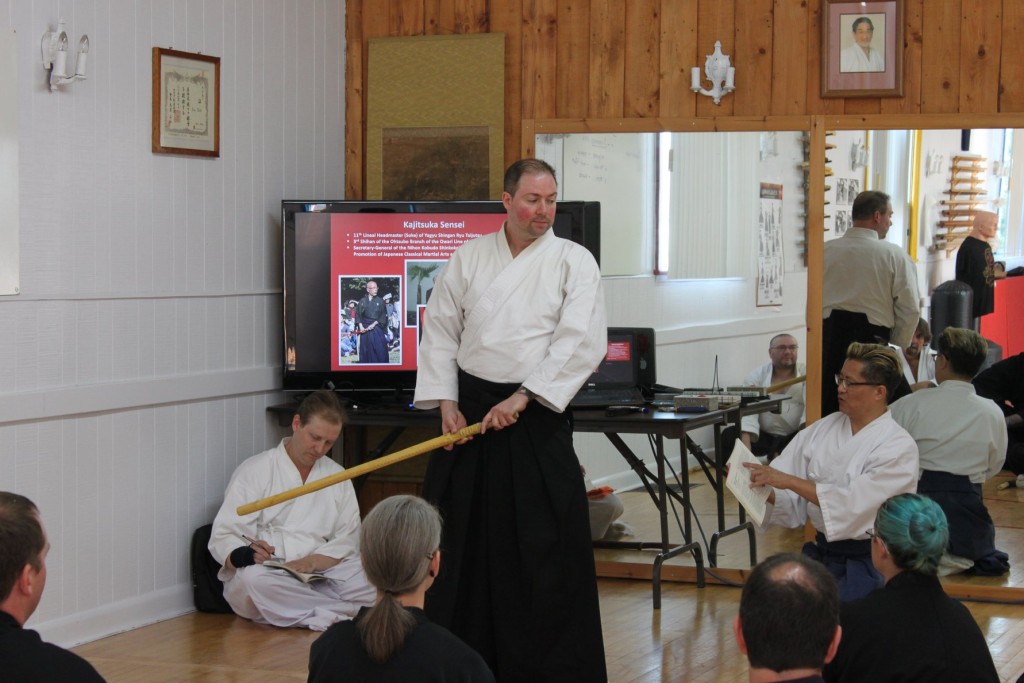
True martial spirit, at least from the traditional Japanese perspective, is not about winning. Developing this correct Budo spirit takes a long time. That is the journey, one of heart and mind, not just the physical, not just a simple matter of learning the techniques of a style. This is about the soul and spirit of Budo, and that was what I tried to convey to them.
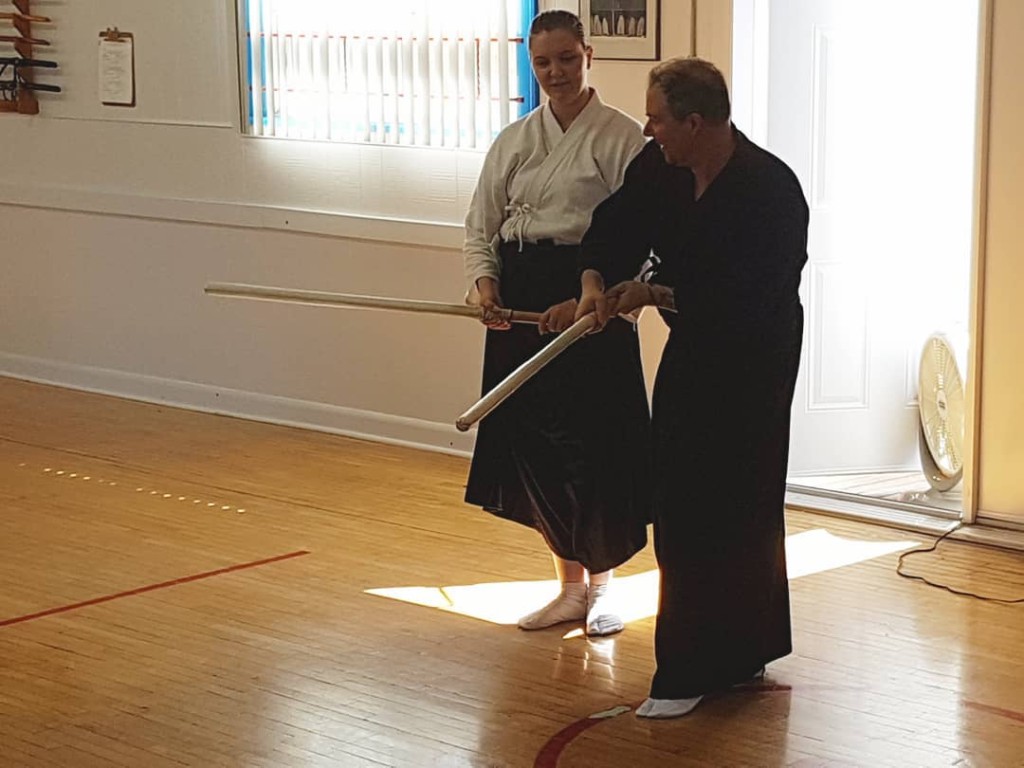
In another case, we had one young fellow who had many questions about the nature of fighting. Which is the best style? How do you know it is the best style? What is the best technique to handle this situation?
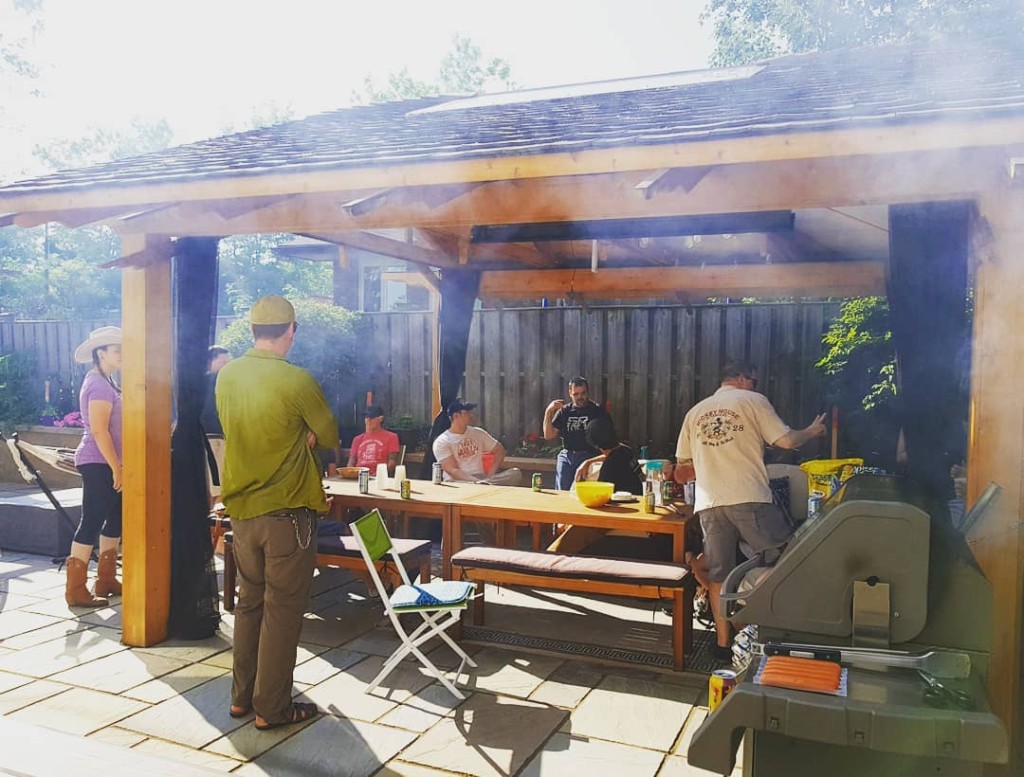
And what answer did I give? I said, “It depends.”
At first, he was perplexed. That’s not much of an answer. It depends? That’s so lame, our young person probably thought. He was likely thinking, “I need a more definitive answer”.
We talked at the wonderful BBQ dinner put on by Sensei Tribe who went all out to feed this big group. Our sincere thanks to him for this real and unexpected treat. It was a great bonding event.
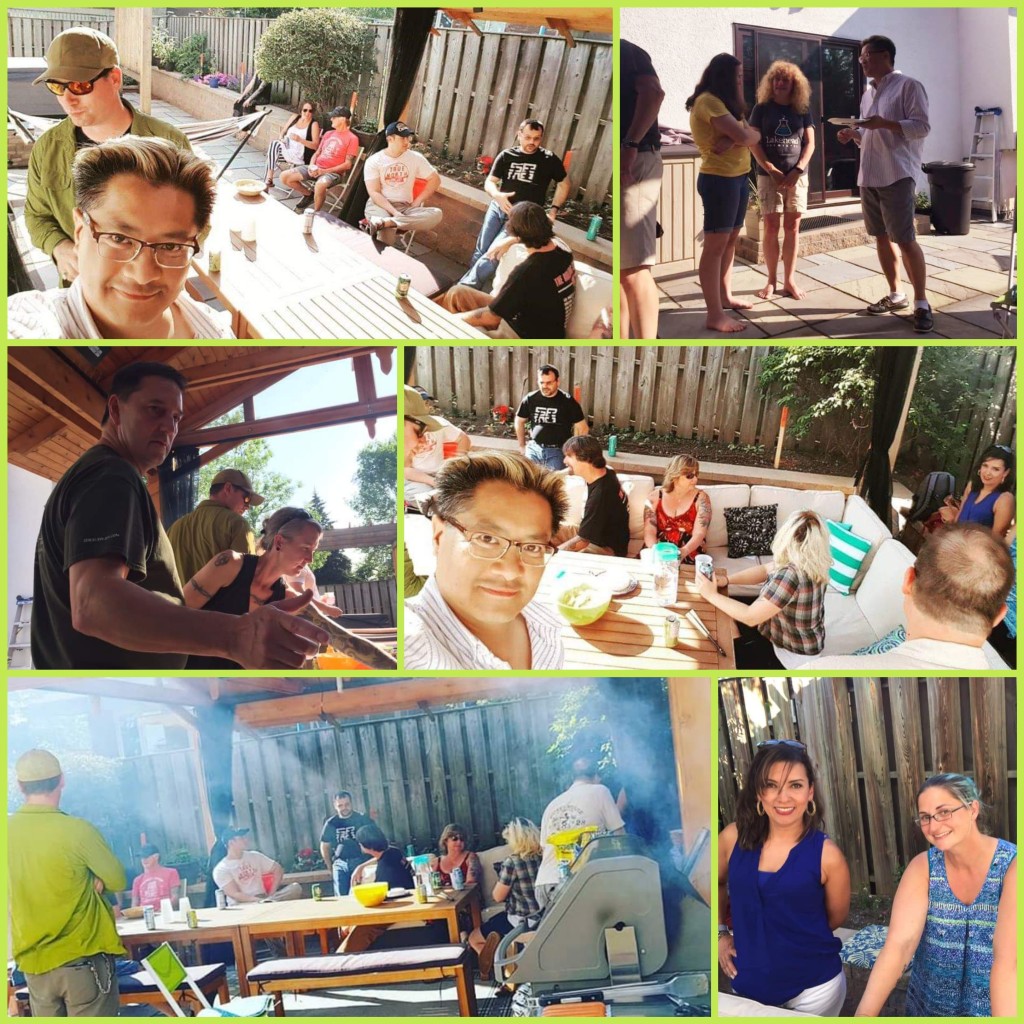
But, back to the question: which is the best technique? Well, it depends on who the opponent is. Is he big or small? Is he experienced or a novice? Is it a bar fight scenario or in the street? Are there weapons involved? A lot of variables that need to be considered and computed. Who initiates and how? Is it a sucker punch? Is it a grab? Is it a push? Is he alone? After all these things were brought up, it dawned on him that, yes, there is no one answer. It really and truly does depend on the situation and the many other factors involved.
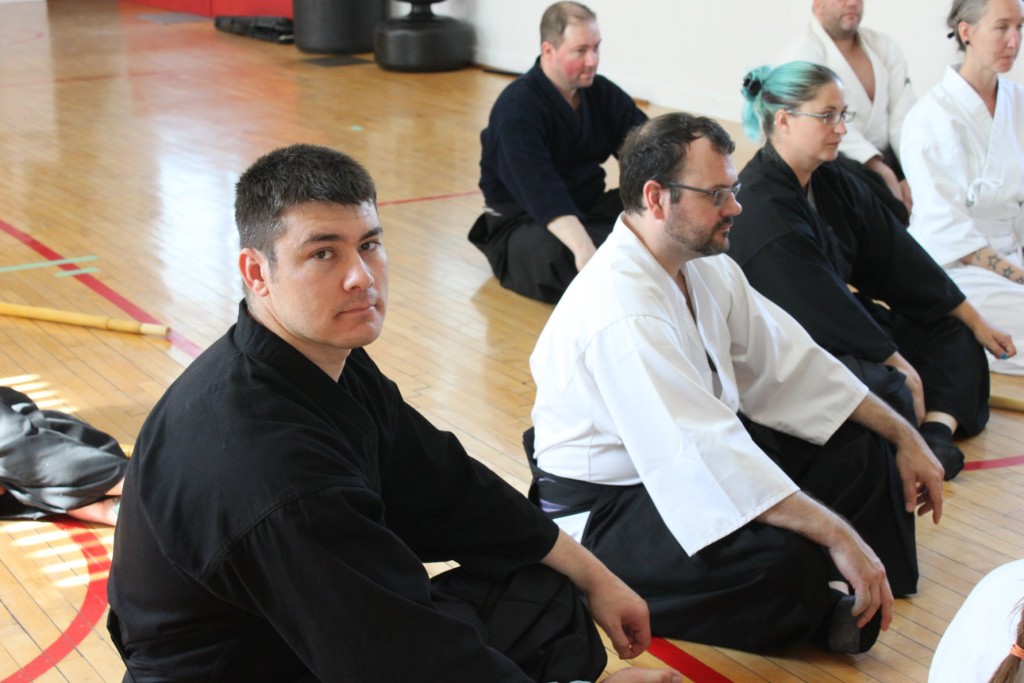
Which is the best style? Every style works in some situation or circumstance. We also discussed how every style was created in a certain place and time, and was the Founder’s answer to a tactical situation, either thought out or discovered. Many old traditional styles were not created to address modern cage fighting. Many old styles were not designed to fight against other high-level, professional martial artists; they were created as a means of self-defense against ordinary thugs.
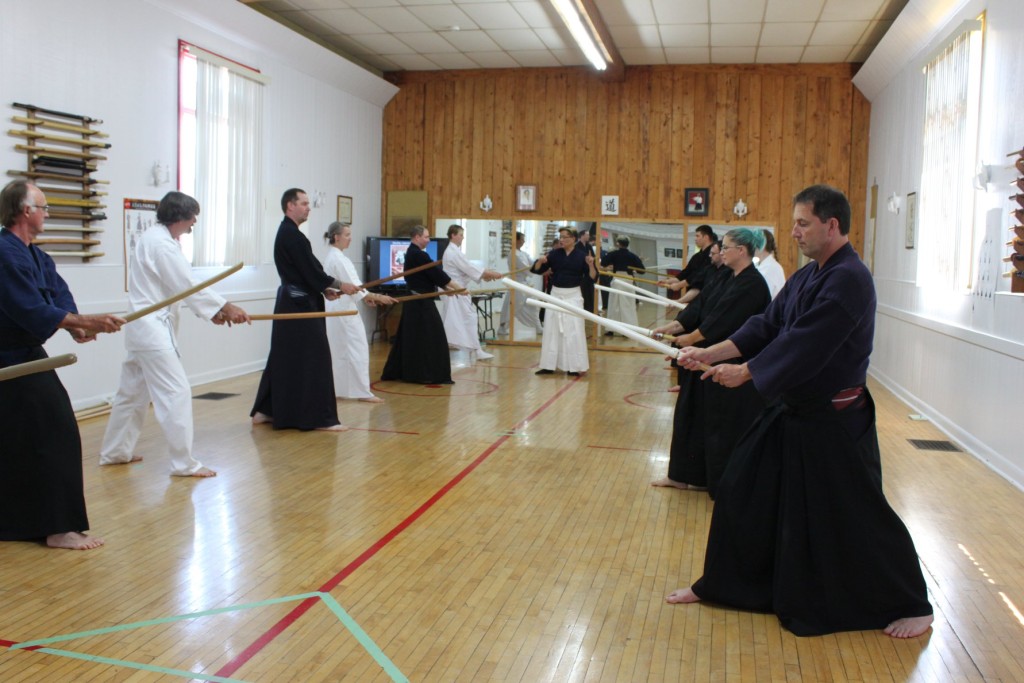
Is kung fu better than karate? I have no idea. They both work in certain circumstances. Which is better? Depends on the practitioner. And really does it matter? Find something you like and which fits you best. That might be a better approach, I told him. It doesn’t matter if it is the greatest style on earth; if you can’t do it well, it won’t help you. If it doesn’t fit you, you won’t be able to become really good at it. So I gave our young fellow a lot to think about.
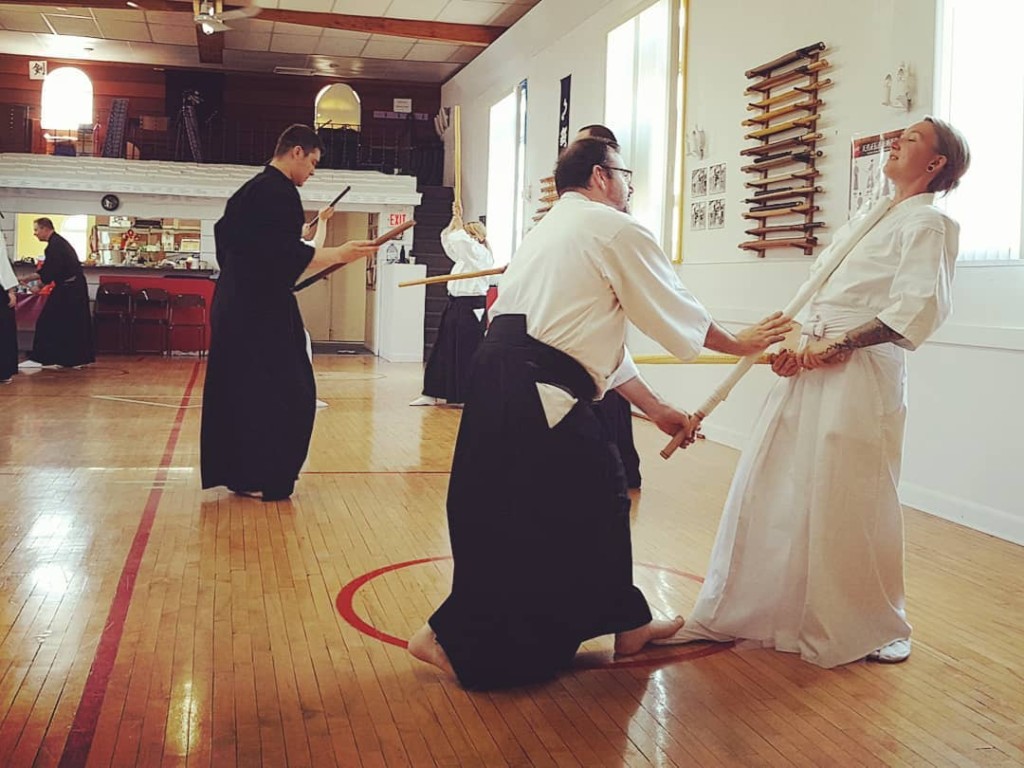
“It depends…” This is a life lesson.
A New Outlook
“Thank you for my polish and blueprint instructions.”
Traditional budo is about polishing. That was a big theme over the weekend. A lot of people want to move on. They learn a movement, practice a few times, think they have it, and want to move on. They are bored. Well, then it is time to pick a different hobby. Budo training is about constant training in the same thing, over and over again. Really exploring it, feeling it, understanding it. Getting good at it, really knowing it inside and out, finding out how it works.
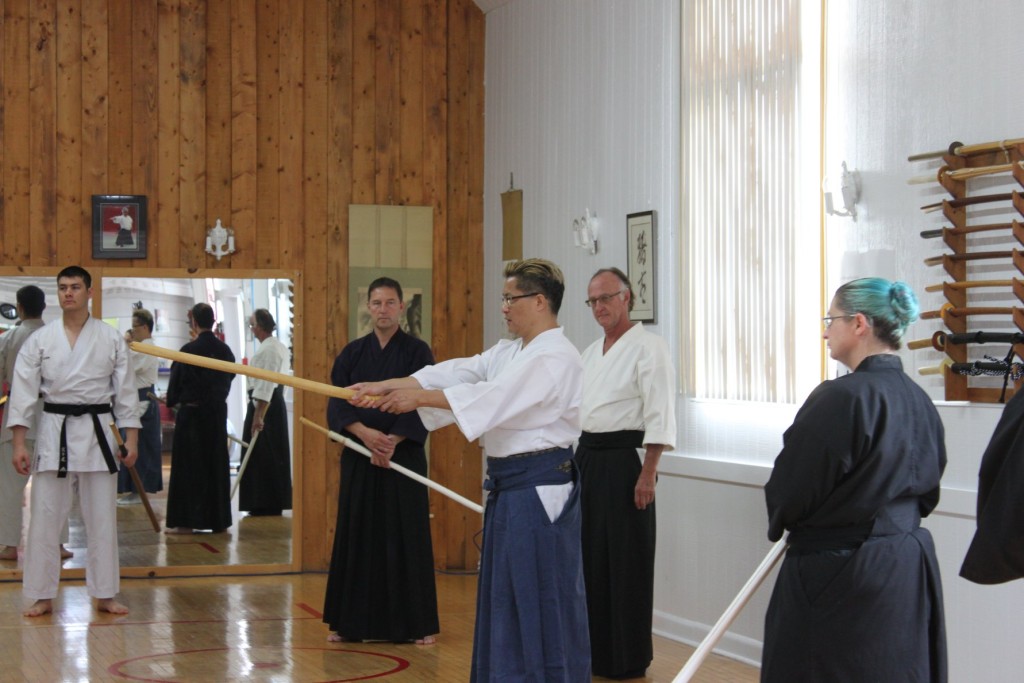
“Originally, budo has developed not by pure theory, but by constant practice and doing the Way. Hence, you must be ceaseless and not lazy.”
Many people wonder: how did he become a master? It wasn’t magic, I can assure you. It is long, hard practice over decades. Being diligent in their practice, taking a long-term view, enjoying just the act of training; this was a message I wanted to convey to this new group, to start them off right. Enjoy the journey.
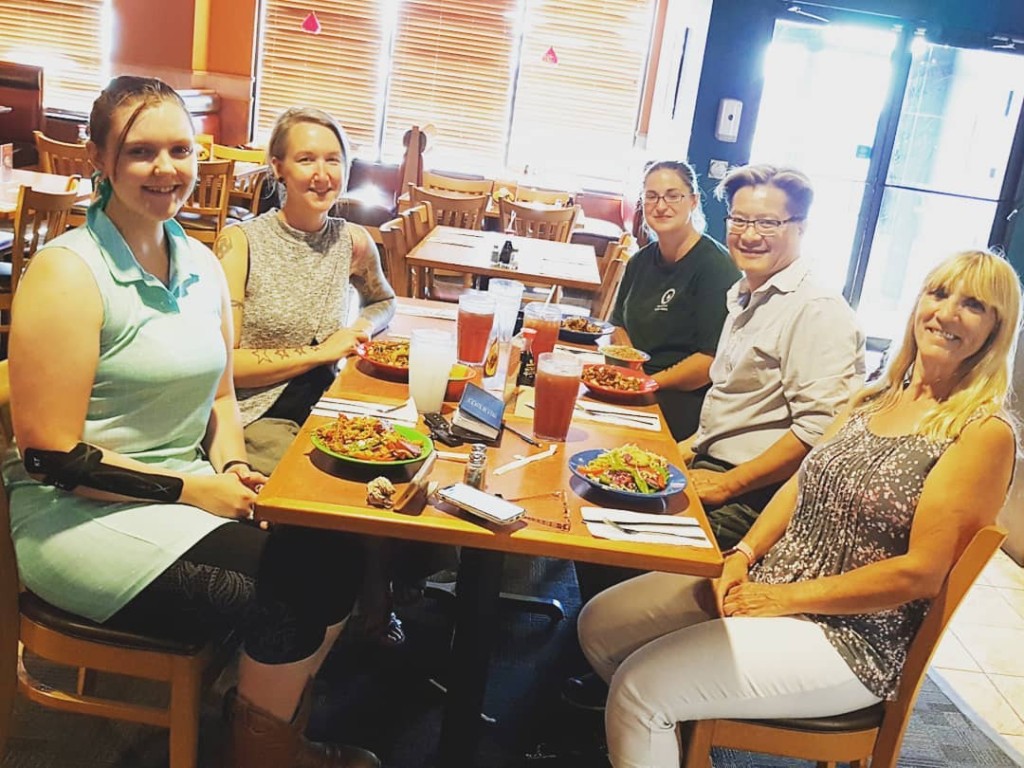
New Inspiration
“Thank you for a wonderful and inspiring weekend.”
Technique isn’t everything. I showed them a quote from my old master, Sugino Sensei. He said that heart and technique must match; that is the ideal.
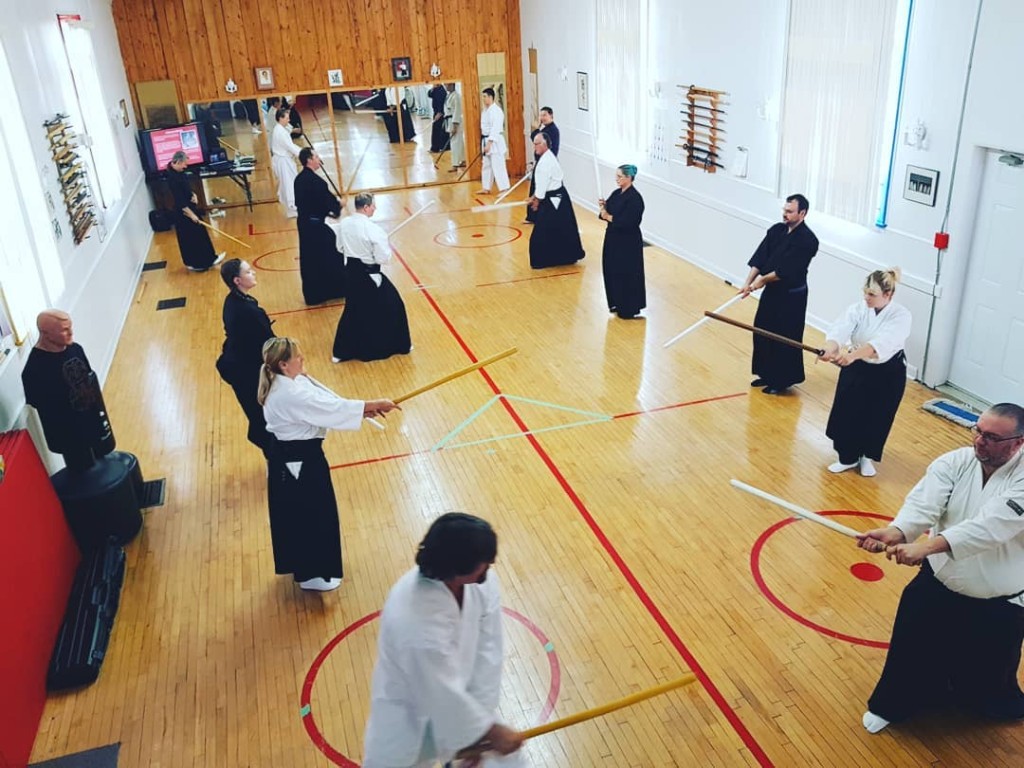
“This contains a deeper truth: the dojo is the place to develop character by continually polishing your technique. Rules must be obeyed, words must be spoken with the proper language, always must the dojo be cleaned and put in order. You must pay attention.”
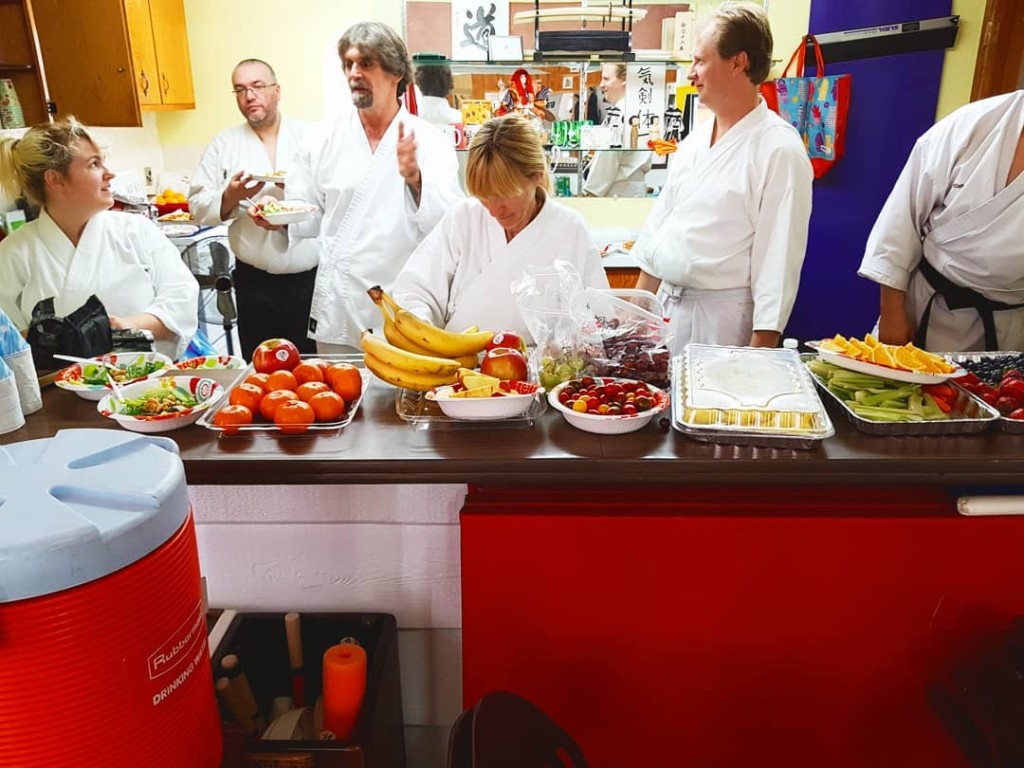
Training is about developing character. It is not about beating up people or being the toughest or conquering people. It is about developing your soul, becoming a better person. That idea, putting your life in order, is a powerful idea. Budo is a blueprint for life, for living your life. Not just for fighting. That is just the surface. As my first master said, there is a deeper truth…
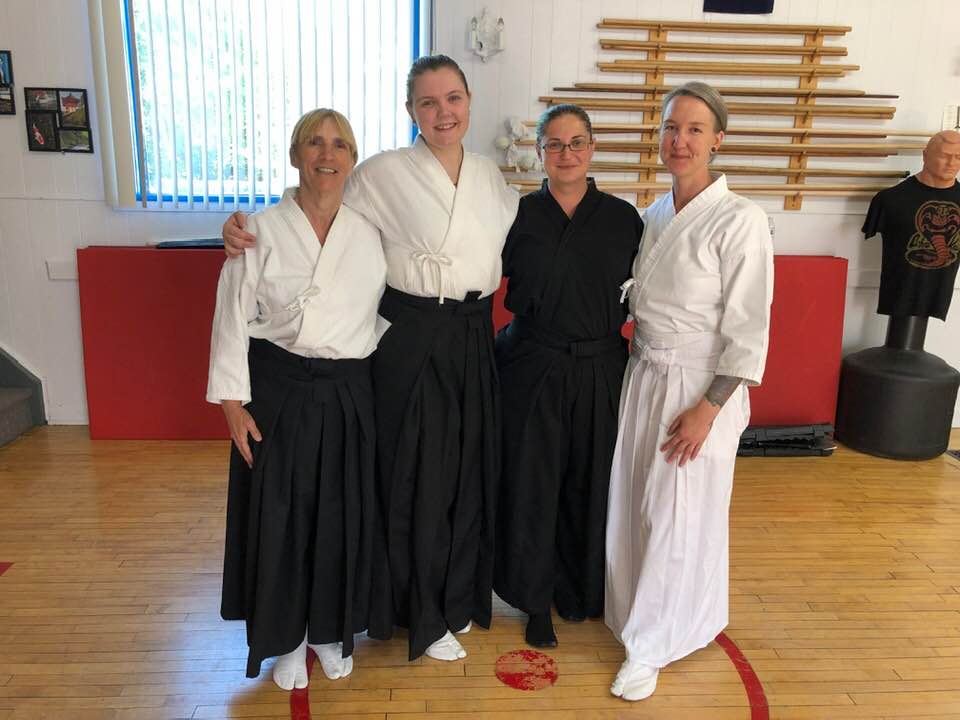
New Pathways To Explore
“Thank you for sharing everything with us.”
They experienced a blend of history, philosophy, technique, spirituality, mindset, psychology, social commentary, religion, and a bit of critical pedagogy.
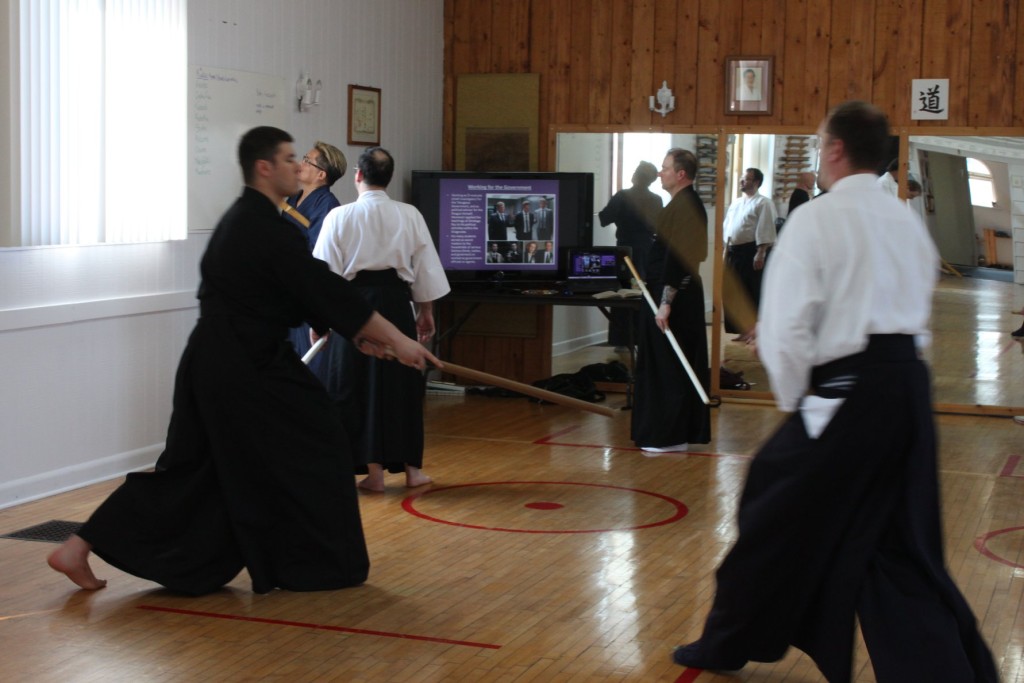
They learned that Budo is not just technical but also mental. We examined the mind, which is heavily propounded in Yagyu Shinkage Ryu. We looked at how the mind plays a big factor in sword-fighting. Techniques are useless if you panic. Fear is very real.
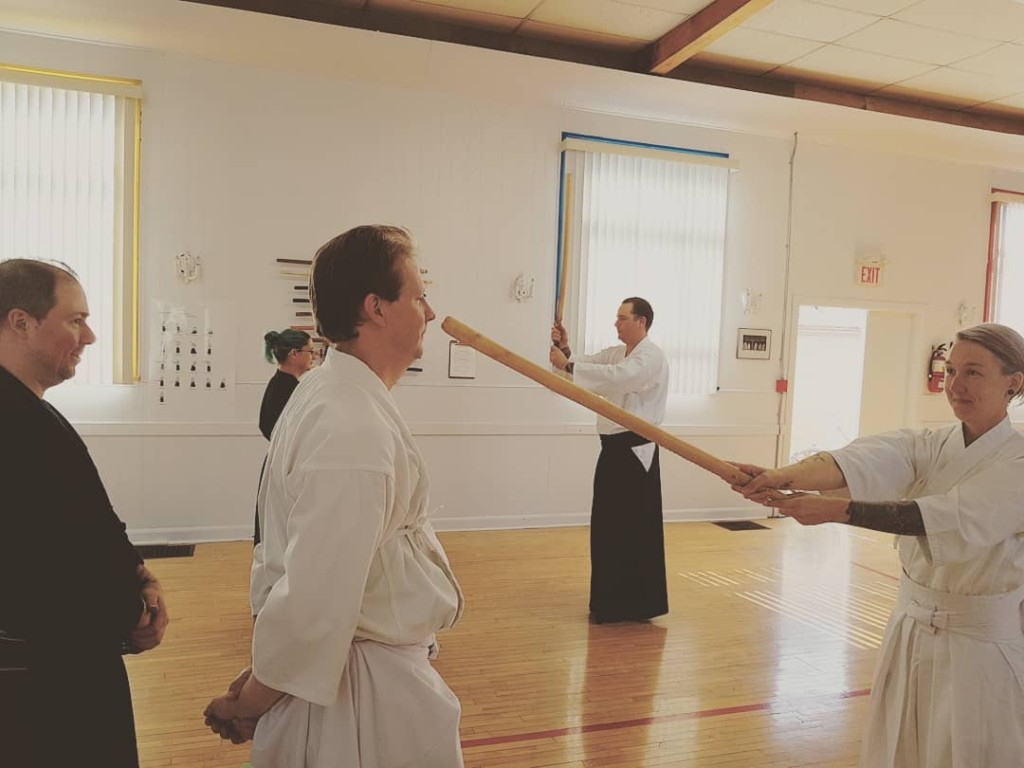
It is rooted in history; we looked at the historical bases for the style that we embrace: Where did they come from? How did they evolve?
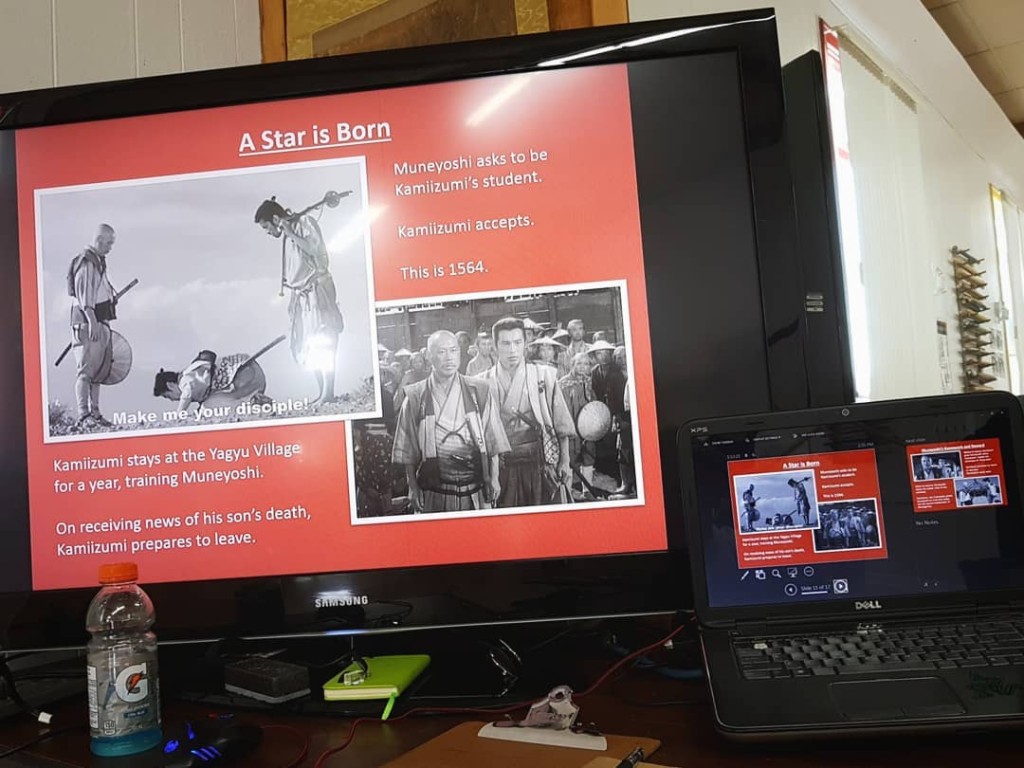
Budo is very spiritual. It was handed down from the Gods.
“Iaijutsu was born in Japan in the God’s technique. It is certainly a divine art. A gift from the Gods.”
And as we have seen, Budo is about the soul’s journey to enlightenment.
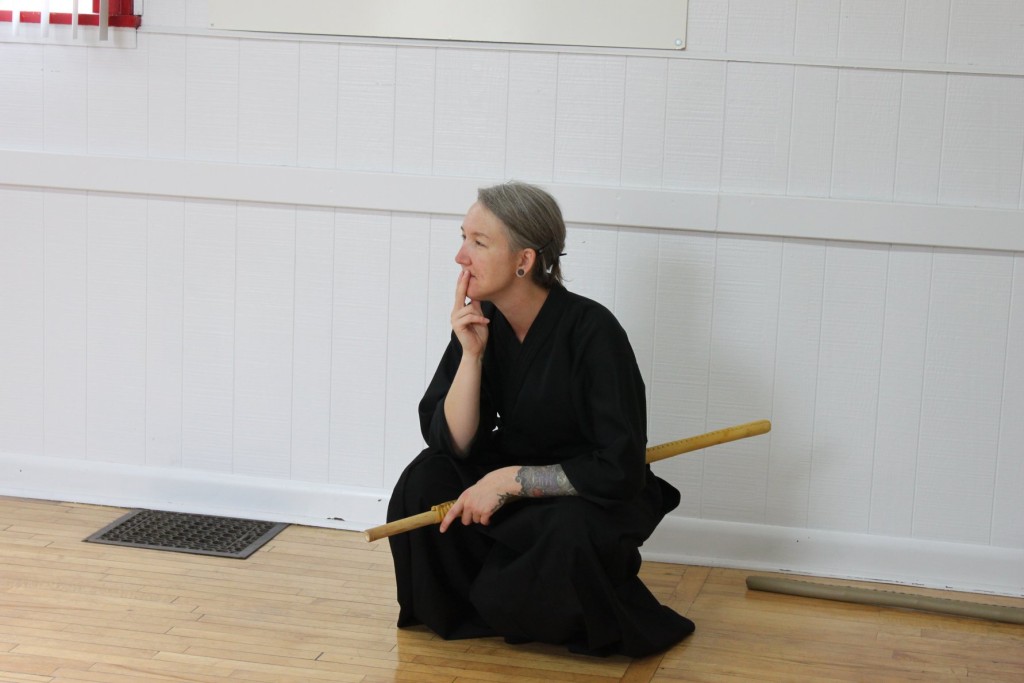
Budo is philosophical. Mushin (No-Mind), Heijōshin (Ordinary Mind), and Fudōshin (Immoveable Mind) are all key concepts in Budo training, particularly in our art of Shinkage Ryu. We saw lessons in that throughout the weekend.
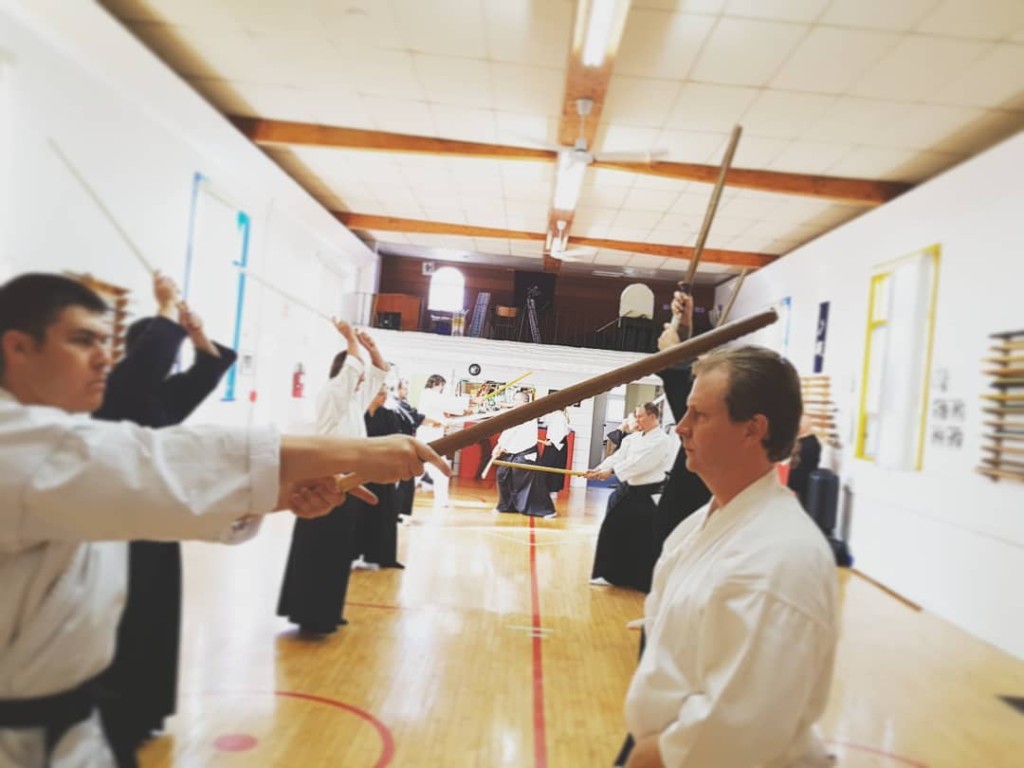
Budo is also ethical. We talked about the Sword of Peace, about violence and Buddhism’s tenets on ethics. We examined the concept of ‘katsujinken’, the Life-Giving Sword, and how it permeates and is imbued in all our techniques and outlook.
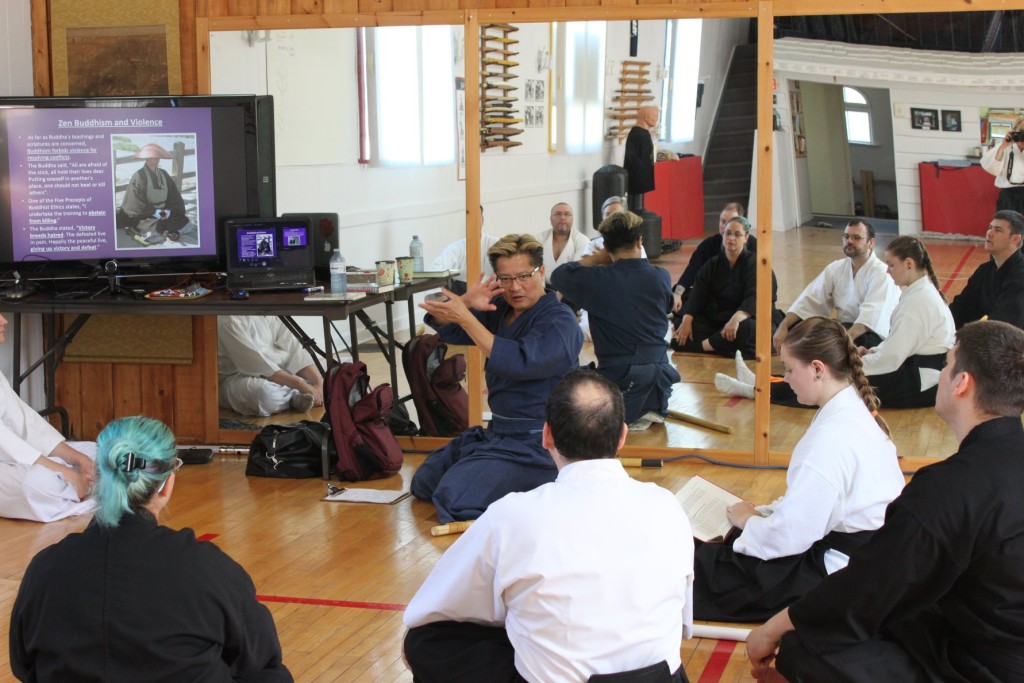
And critical pedagogy? Well, that is about having a say in changing your life and your condition, about having the right and ability to have input into civic life. We examined the lives of the men who shaped our style (from our Founder Kamiizumi Nobutsuna to Yagyu Munenori, sword instructor and political advisor to the first three Tokugawa Shoguns), the effect they had on history with the transformation of Japan from the age of anarchy to the age of peace. This was a valuable history lesson. They changed things for the better. Each of them was only one man. Can one man, one person, make a difference? Yes. They made a difference, a profound contribution. And so can you. So for some students, yes, this was inspiring.
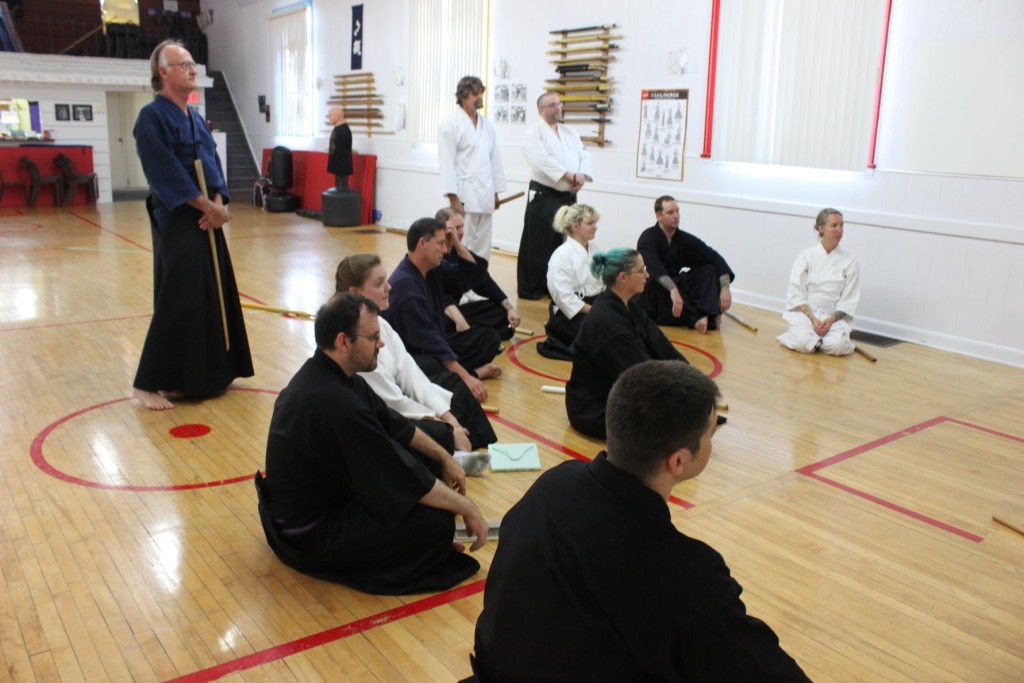
So, one of my goals with this seminar was to show them that Budo encompassed a wide variety of perspectives and pathways that they needed to explore and learn more about. For some, maybe it was to delve deeper into the history; for others, perhaps they needed to go deeper into philosophy or ethics. Regardless, my message to them was to do more personal research to grow.
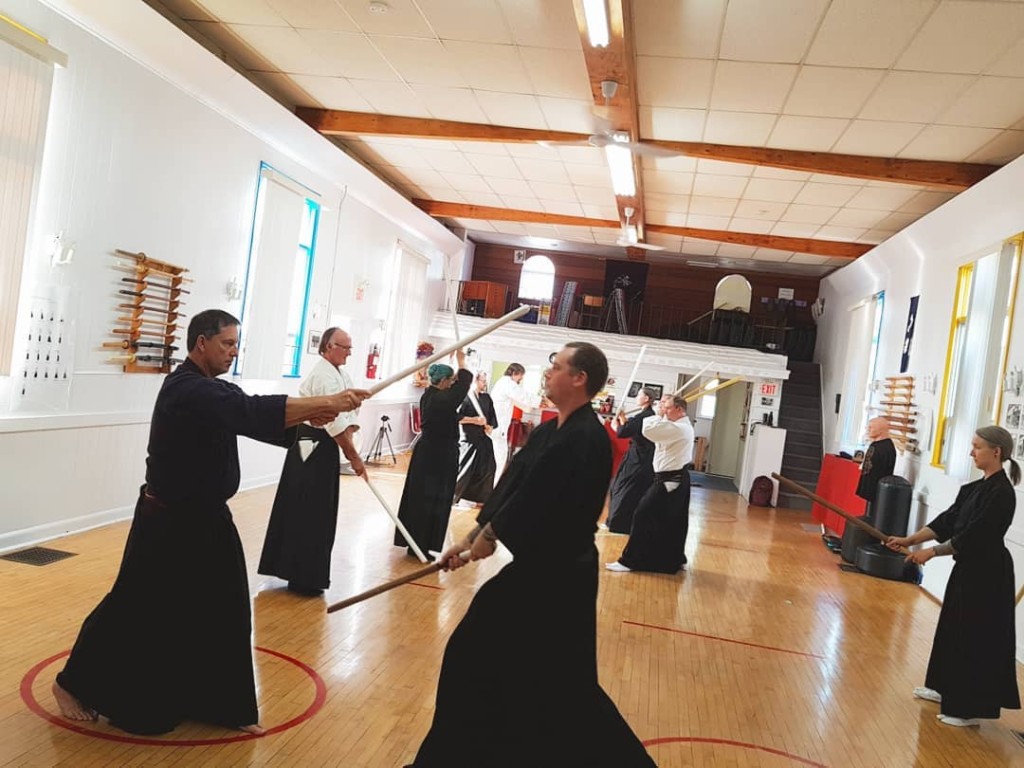
New Experiences
“Thank you for an incredible experience. I am looking forward to the future.”
For others, this seminar was a breath of fresh air. The pace was different. The ambience was different. The goals were different. The approach was different. The teacher was very different.
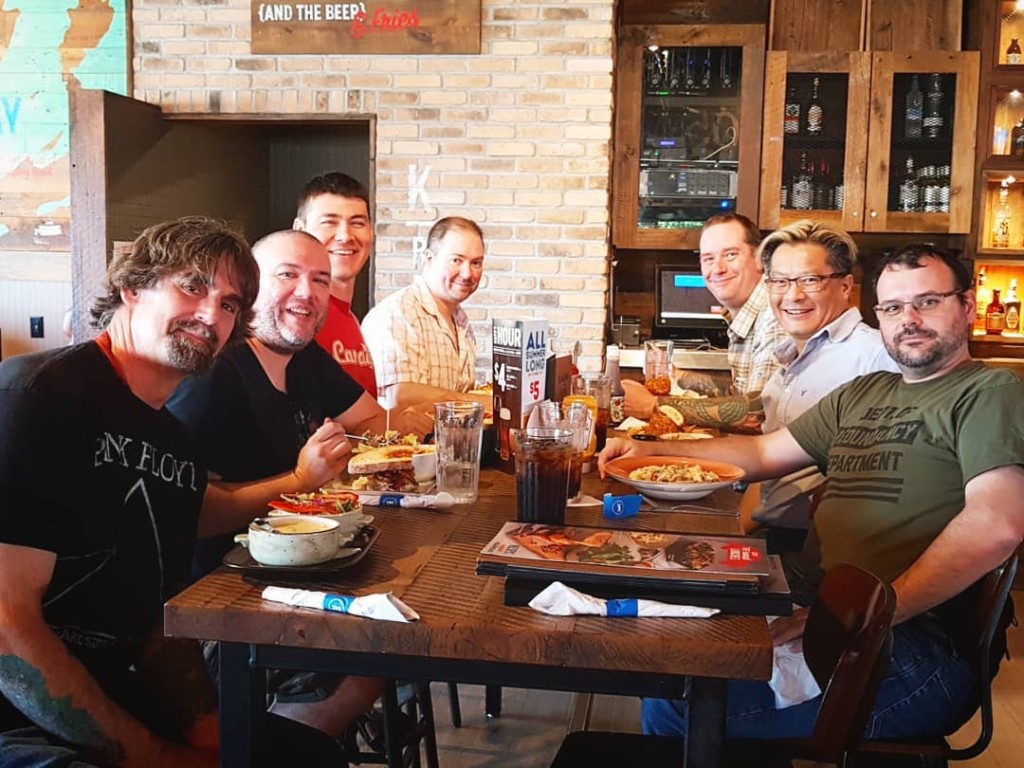
They explored new points of view. Fighting against a spear is very different from fighting sword against sword. Fighting against an opponent with a 6 foot wooden staff is likewise a difficult proposition.
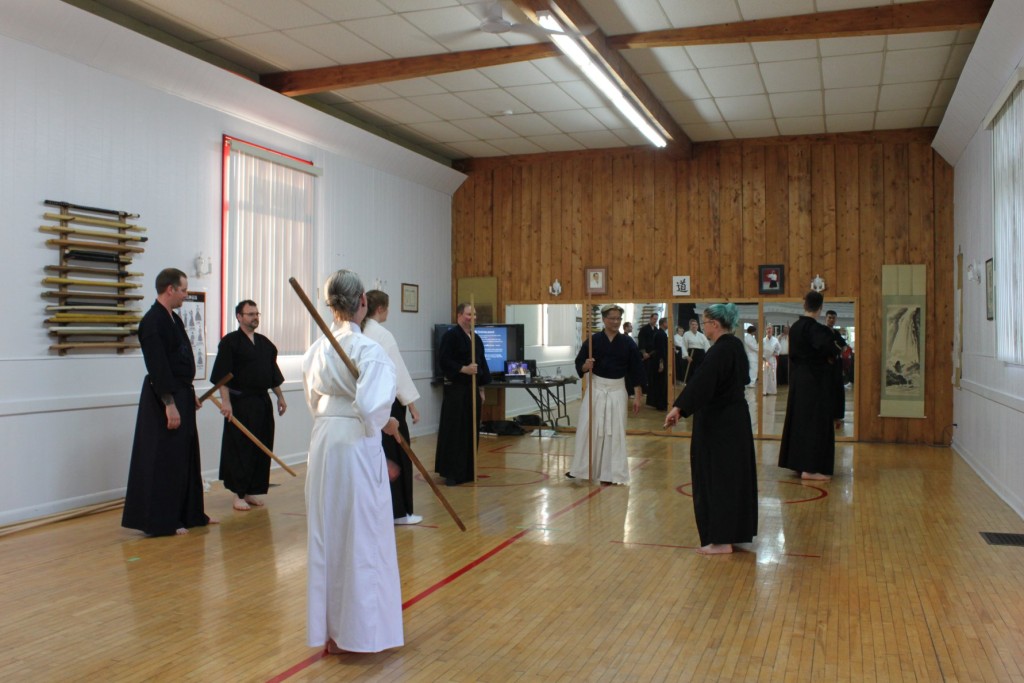
They saw new ways to use their sword; sometimes in truly radical ways. They tried new ways to hold their sword. New cuts, new strikes, new tactics. Even concepts they already knew from other sword arts, like timing, distance, rhythm, and force, were experimented on in new ways.
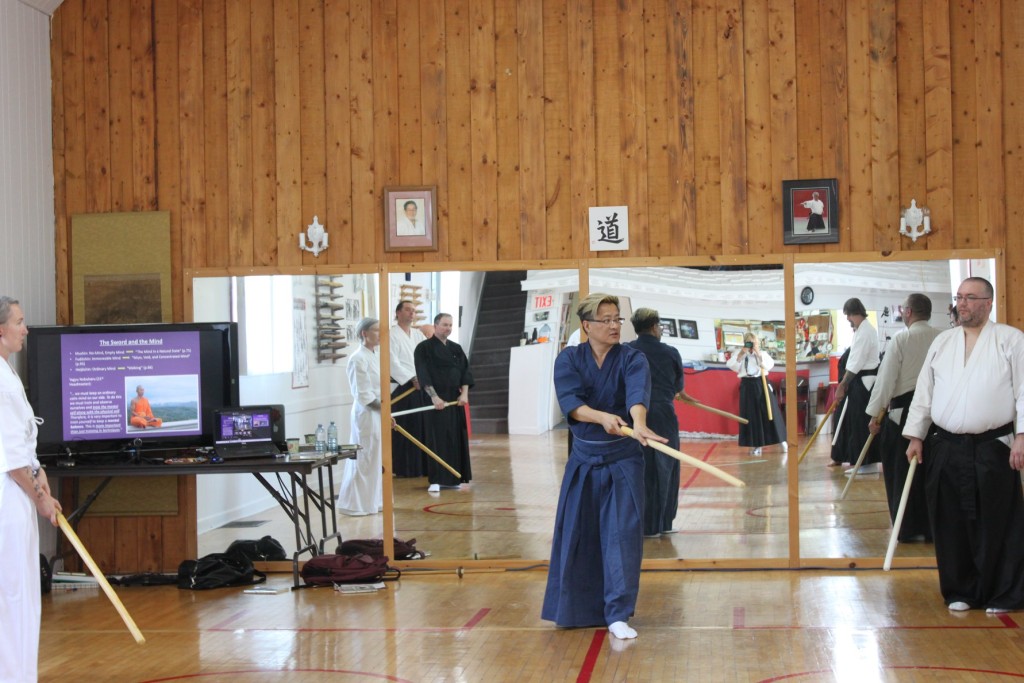
They saw budo from a different set of eyes. We examined the idea of Mutō (No-Sword or swordlessness). Most conventional sword styles focus on the sword and proceed in their training and tactics from the vantage point of having a sword. They actually do not realize that they are, in a way and from a certain point of view, obsessed with having a sword. But consider the position of losing your sword. Now it is a completely different situation which requires a completely different mindset, when you have to fight someone who has a sword and you don’t. The thinking becomes radically different. (But then again, maybe it shouldn’t?…)
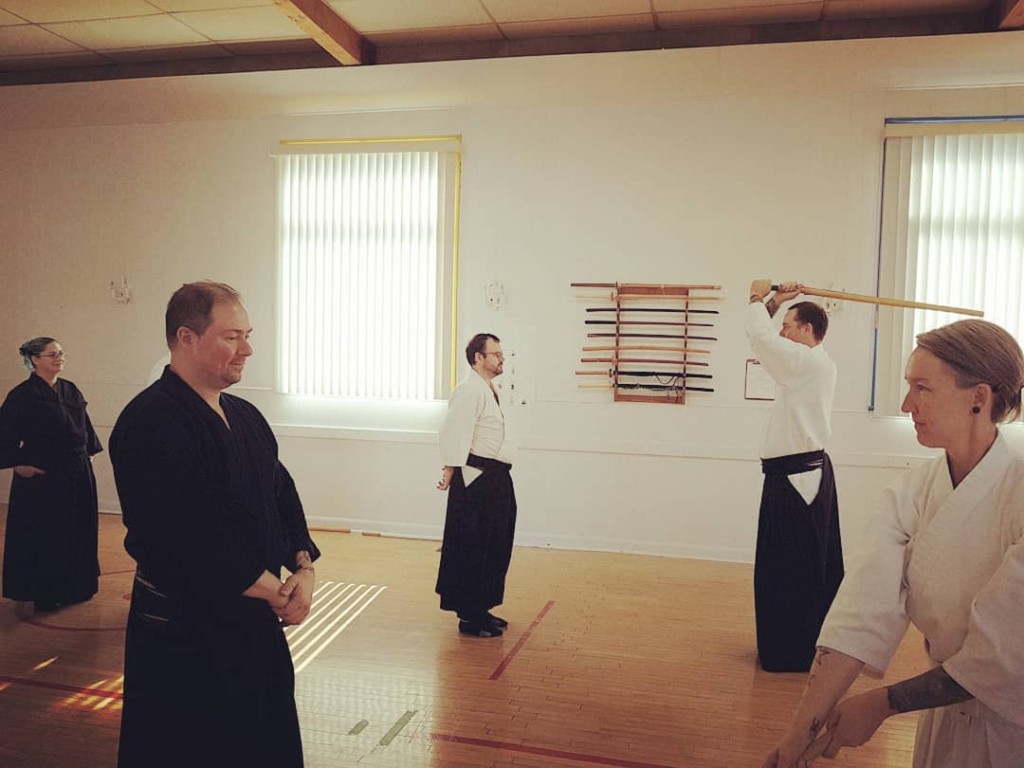
In some ways, we expanded their horizons – they experienced a whole new world. From our historical perspective, they experienced how the role of swordsmanship changed from the time of darkness to the era of enlightenment. The sword could be a positive force, a unifying force for good in the world, and not just an instrument of destruction. So they had to learn new approaches, like not to cut off people’s heads or hands but instead to injure, gently if possible, which requires a mastery of blade control and manual dexterity.
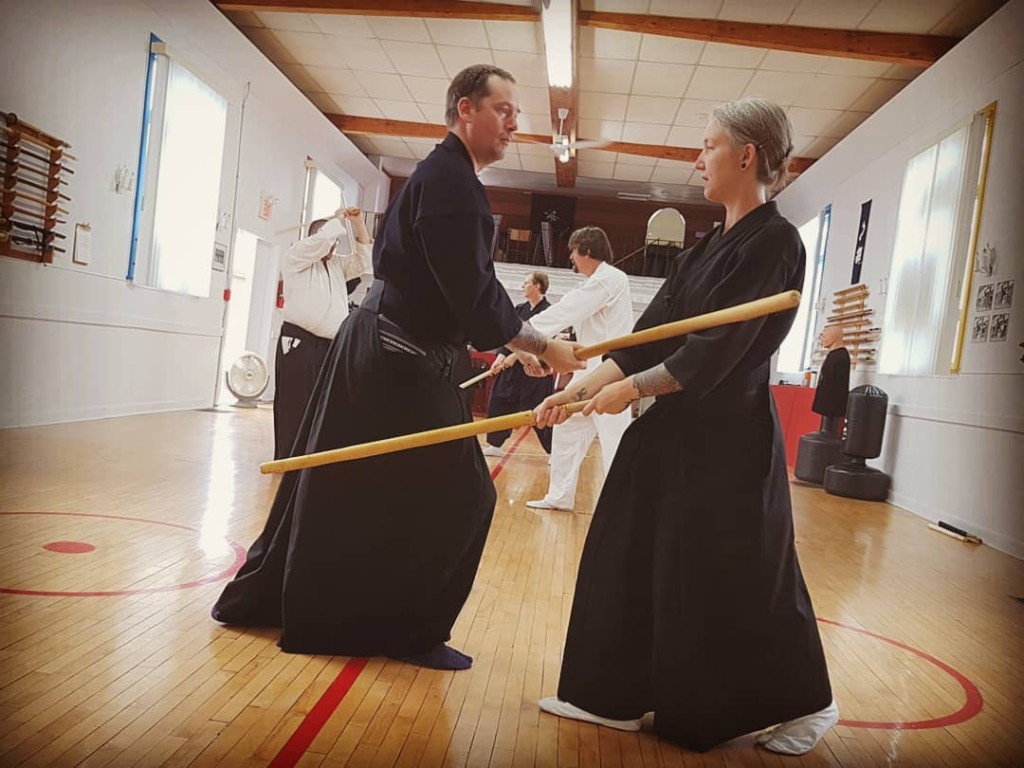
In another way, we brought them some balance. Before I arrived, some students were very heavy-handed and powered their way through all the techniques. Some students only saw technique through the lens of strength and dominance. I suppose their idea of Budo was to approach it like a Viking, from our example above. That is what they see on TV and in the movies. Their ideas were skewed.
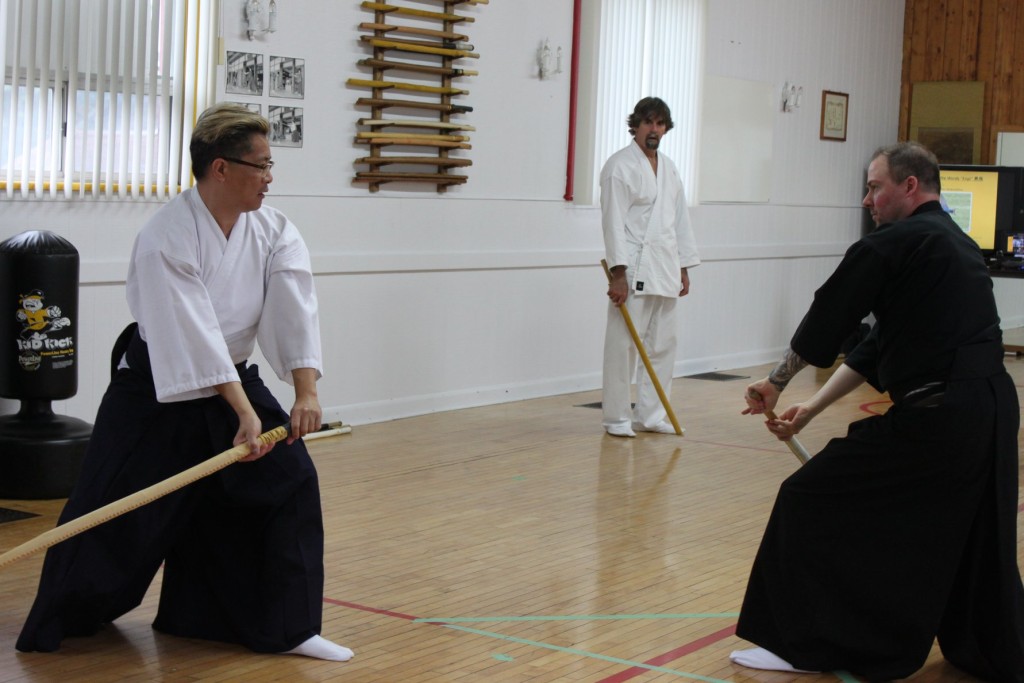
This weekend, they saw a different kind of swordsmanship. They saw sword technique expressed from a viewpoint of precision and placement, finesse rather than strength. Equally deadly, a sword that slices you to ribbons rather than chops you in half. Our young Viking admirers, whose idea of swordsmanship consisted of being rough and ready with big chopping moves based on brute strength, saw a high-level sword that flows and eludes and slashes with deadly precision and accuracy.
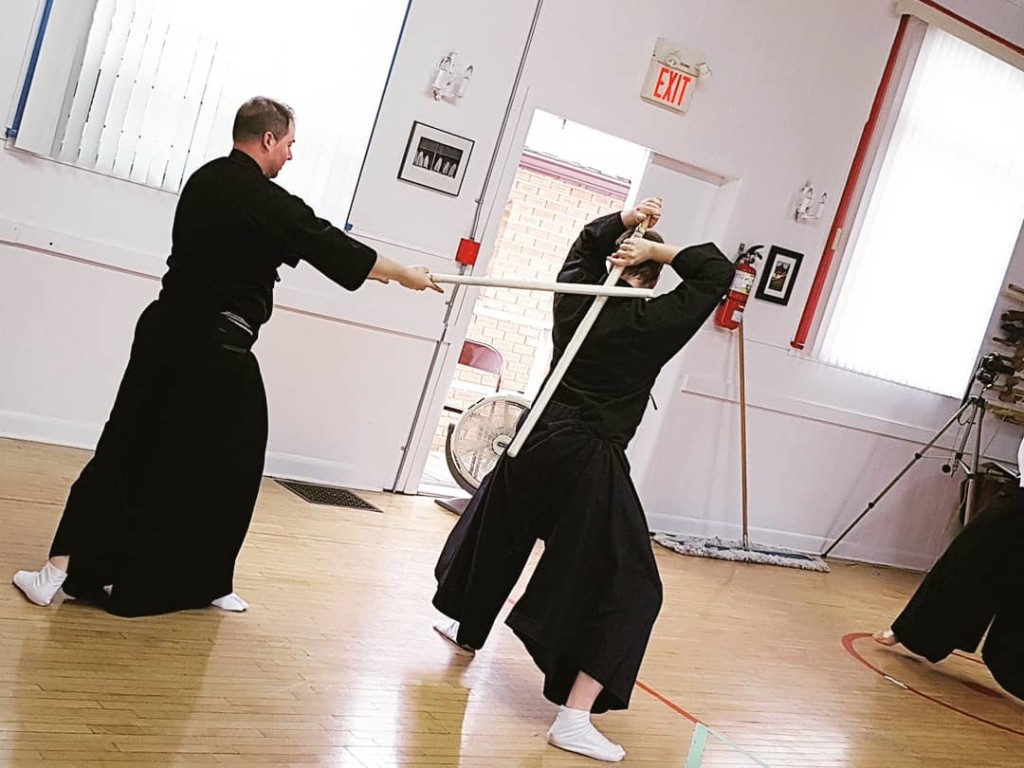
Like Obi-Wan said: “You’ve taken your first step into a larger universe.” So, in these ways, we gave them a glimpse into this larger world.
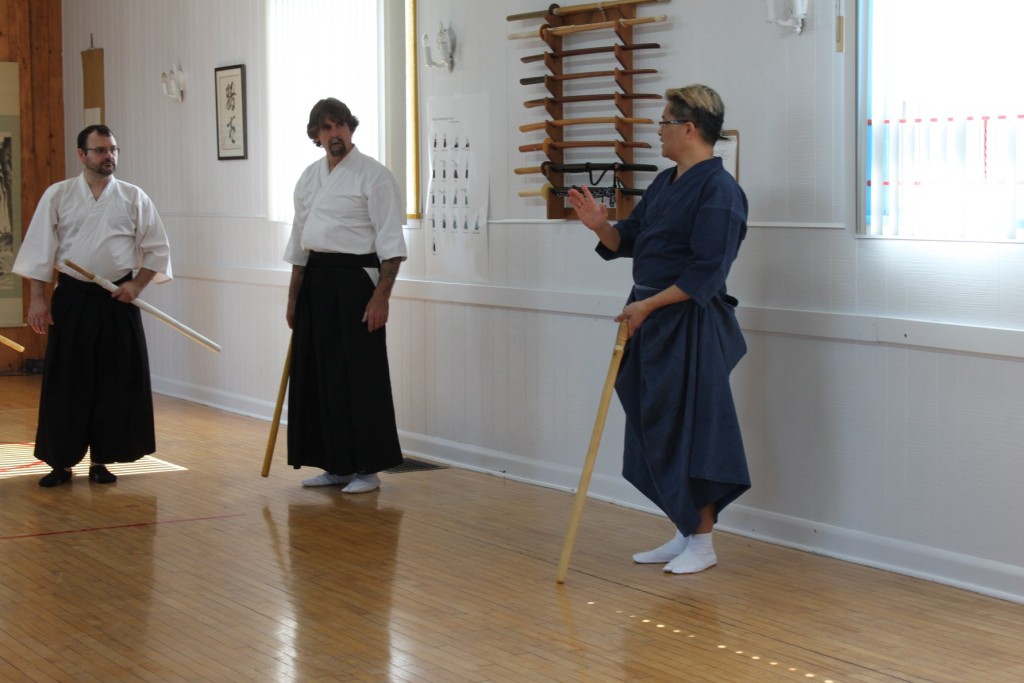
A Conclusion
“Thank you Tong Sensei for travelling to train us and for sharing your decades of wisdom.”
Kyle Kolodij
Mushin Kenjutsu
Thunder Bay, Canada
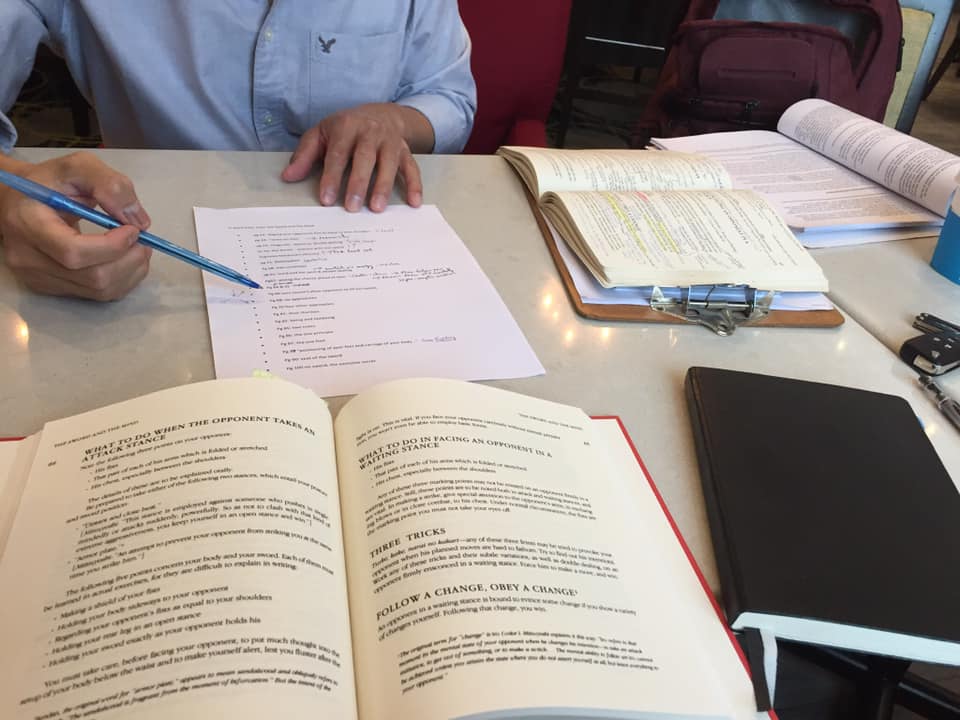
In retrospect, I really enjoyed the seminar. It was very interesting. We had a new mix of people, with unique abilities and backgrounds. We made new connections and new friendships. We tried a new style of presentation, an electronic one which is not my forte. I started out the seminar with the words of my master, Kajitsuka Sensei who said, “Don’t be afraid. Try new things.” That was my advice to the seminar participants. But I myself also had to heed these great words. So I did. I tried a new way, an electronic presentation, and it turned out very well. For the participants, from what I heard, everyone got something out of it and came away happy.
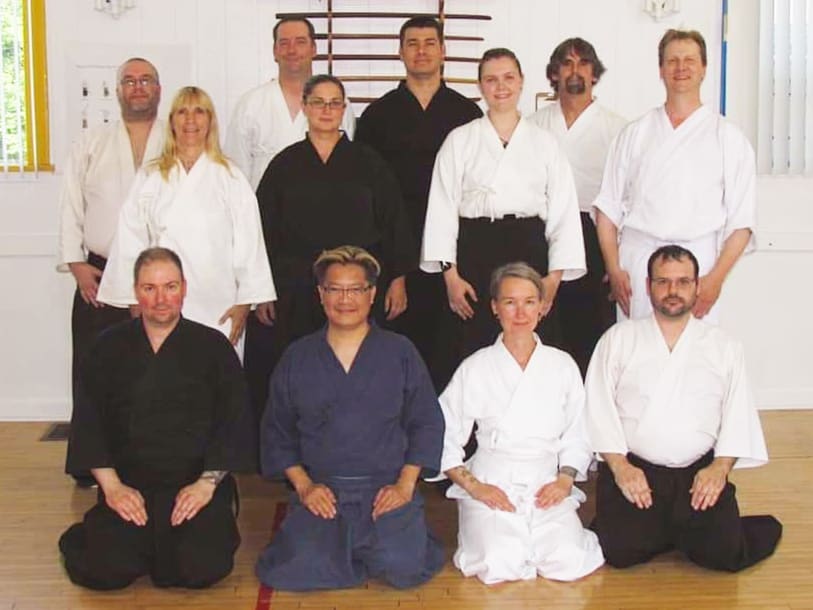
“A huge thank you to Mushin Kenjutsu and Rai Un Kai – Iaido and Jodo for hosting the 2019 Gasshuku! You all did an amazing job organizing and making sure everyone from out of town was taken care of.
And we are extremely grateful to Tong Sensei for an incredible 4 days of training and hard work. Your dedication to your students and Yagyu Shinkage Ryu is inspirational and leaves us with motivation to keep striving to be our best selves.”
Erika Gaal
Meishinkan Kenjutsu
Ottawa, Canada
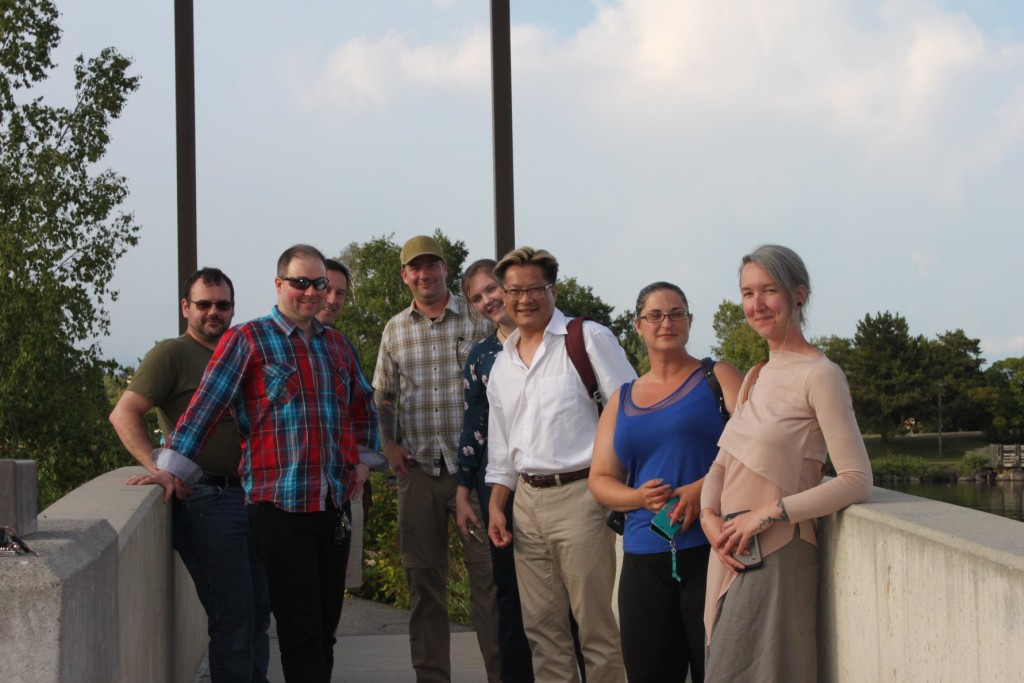
There were many good lessons for them to learn, and not just technical ones like how to swing your sword or move your foot. If I sparked their imagination and inspired them to keep training and researching and exploring the great ‘mystic depths’ of Budo, as Sugino Sensei said, then I will be happy.
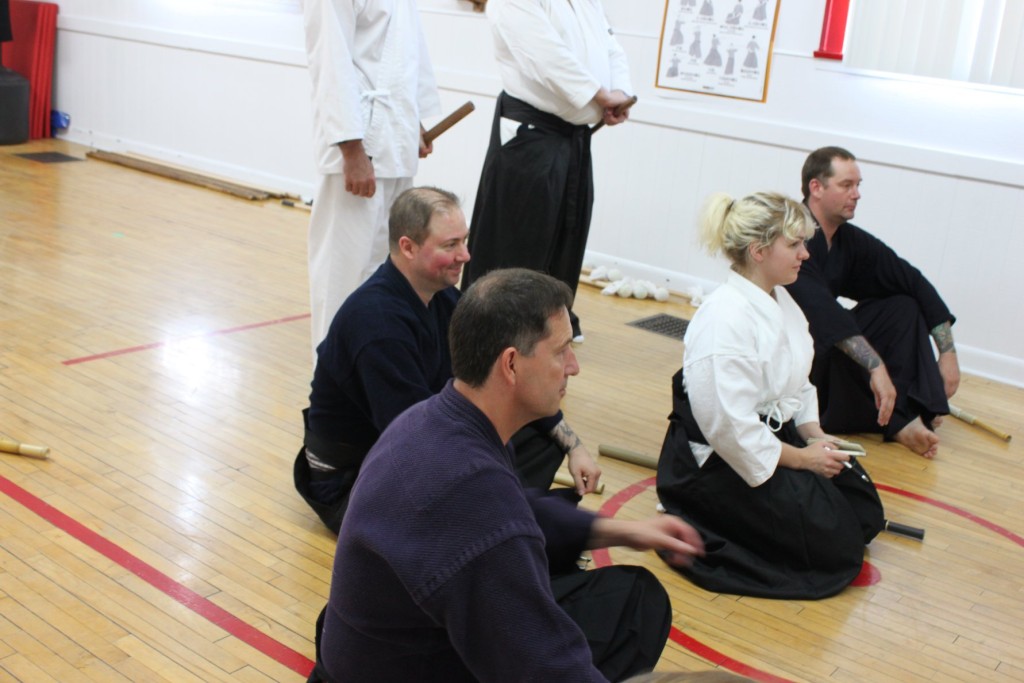
Finally, I want to give a big thank you to Sensei Kyle for inviting me to come to Thunder Bay to once again run a seminar. Lao Tzu says that the journey of a thousand miles begins with just one step. Together, we will walk that journey to learn about Budo.
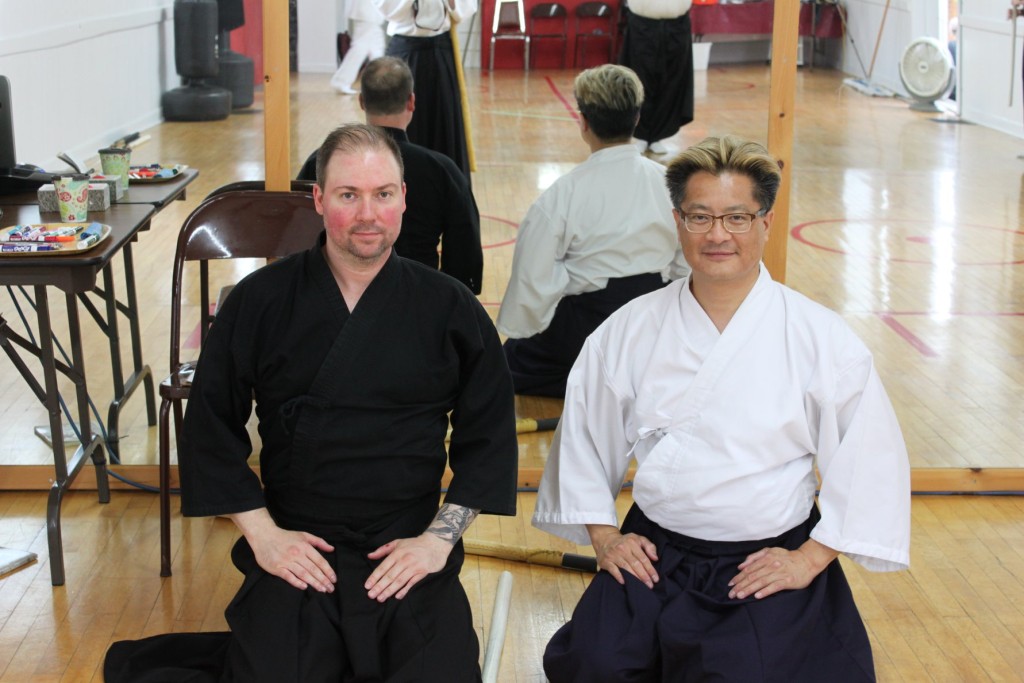
Sincerely,
Douglas Tong
Tokumeikan
Toronto, Ontario, Canada
__________________________________________________
For more about Mushin, Heijōshin, and Fudōshin, please read this excellent article:
States of Mind: Heijoshin by Budo Bum
